- The John Malkovich EXCLUSIVE
- Marlborough Hits 50
- The Six BEST wine books
- Ventoux – Next Century Wines
- Ageing English Fizz: How, Why and What
- The Ten Wines Never to be Without
- The New Face of Languedoc
- Ukraine – Wine not War
- Our WINES OF THE YEAR (2023)
- A Southern French Feast
- ORANGE WINE Part 1
- ORANGE WINE Part 2
- Ancient Vines to the Rescue in St Mont
- Light Strike: Wine’s Not-So-Secret Scandal
- Grower Champagne with Lea & Sandeman
- Going Gaga for Garnacha
- SASSICAIA – The Insider’s Guide
- UK Wine’s Counterculture
- News & Views
- Rías Baixas – Mists, Myths, Mariscos
- Rías Baixas – Albariño with Attitude
- Red Wine Headaches: A Eureka Moment?
- Wine and War – Palestine, Israel and Lebanon
- We Need To Talk About Rosé
- Wines to Combat Climate Change
Summary
If Rías Baixas is famous for one thing, it’s characterful, invigorating white wines based on the superstar Albariño grape – described in this episode by one winemaker as the variety that can take you, ‘from the swimming pool to the Michelin-starred restaurant’.
Its blossoming popularity over recent decades has given rise to imitators all around the wine world – so what is it that makes Rías Baixas Albariño special, and why?
Is there more to the story than just Albariño here?
Who’s doing exciting things?
And what does the future hold?
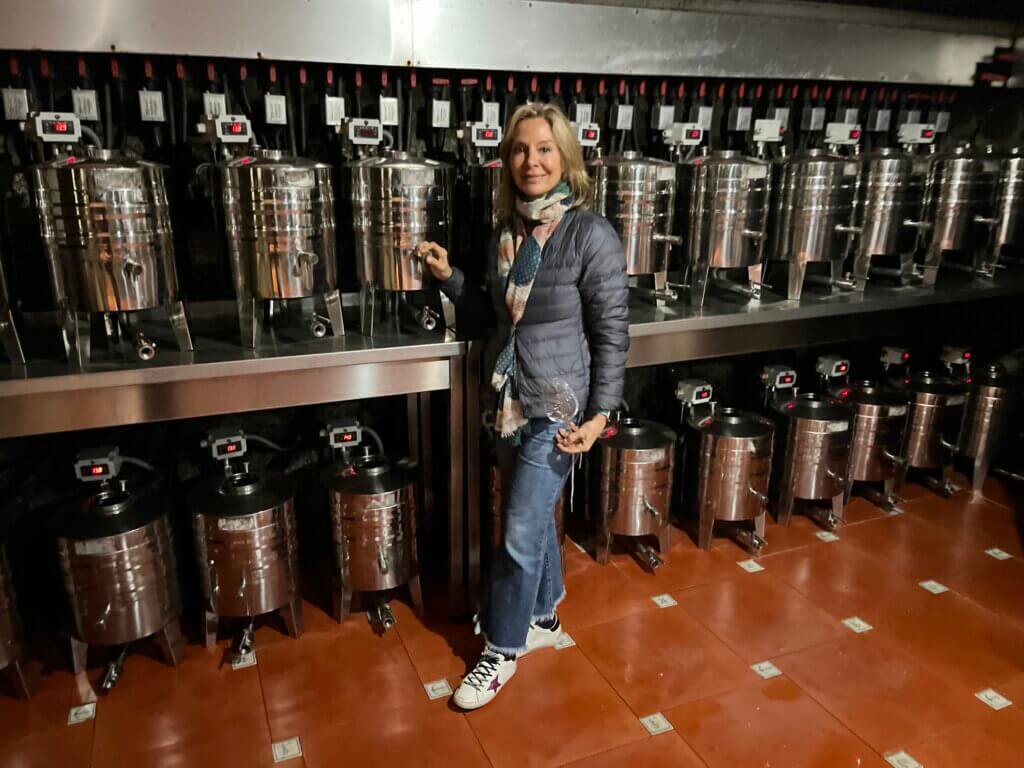
In this second and concluding part of our two-parter, sponsored by DO Rías Baixas, we ask the big questions of key growers including Vicky Mareque (Pazo Señorans), Isabel Salgado (Fillaboa), Lúcia Barbosa (Adegas Galegas), Lucia Freire (Santiago Ruiz) and Natalia Rodríguez (Señorío de Rubiós).
We also feature a number of outstanding wines, from Fillaboa’s 1898 to Selección de Añada (2014 and 2003) by Señorans.
We cover everything from terroir, subzones, blends, experimentation, oak, climate change, competition and more.
Peter goes on a breathless wander and at one point comes up with the line: ‘You’ve been Albariñoed!’ You need to listen to get the full picture…
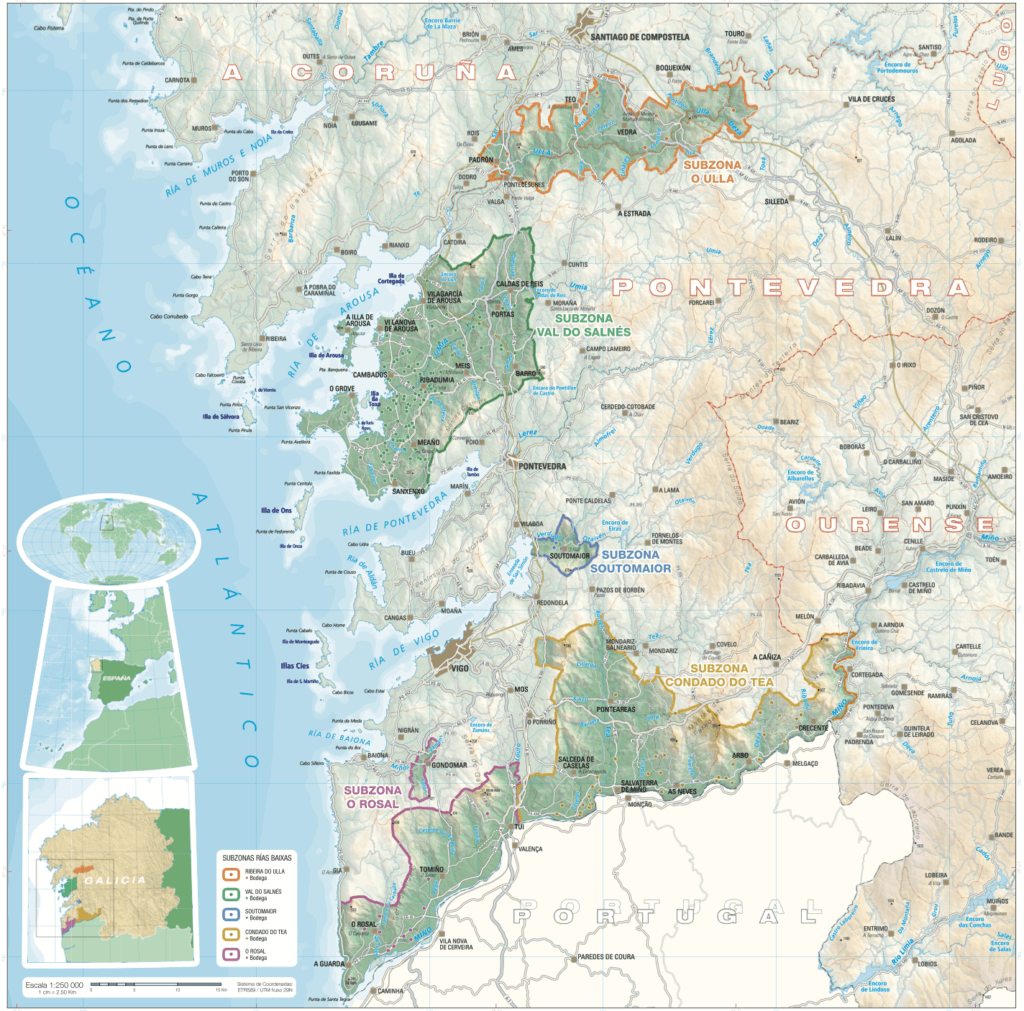
Starring
- Isabel Salgado (Fillaboa)
- Vicky Mareque (Pazo Señorans)
- Lúcia Barbosa (Adegas Galegas)
- Lucia Freire (Santiago Ruiz)
- Stephanie Schilling (Santiago Ruiz)
- Natalia Rodríguez (Señorío de Rubiós)
- Susie & Peter
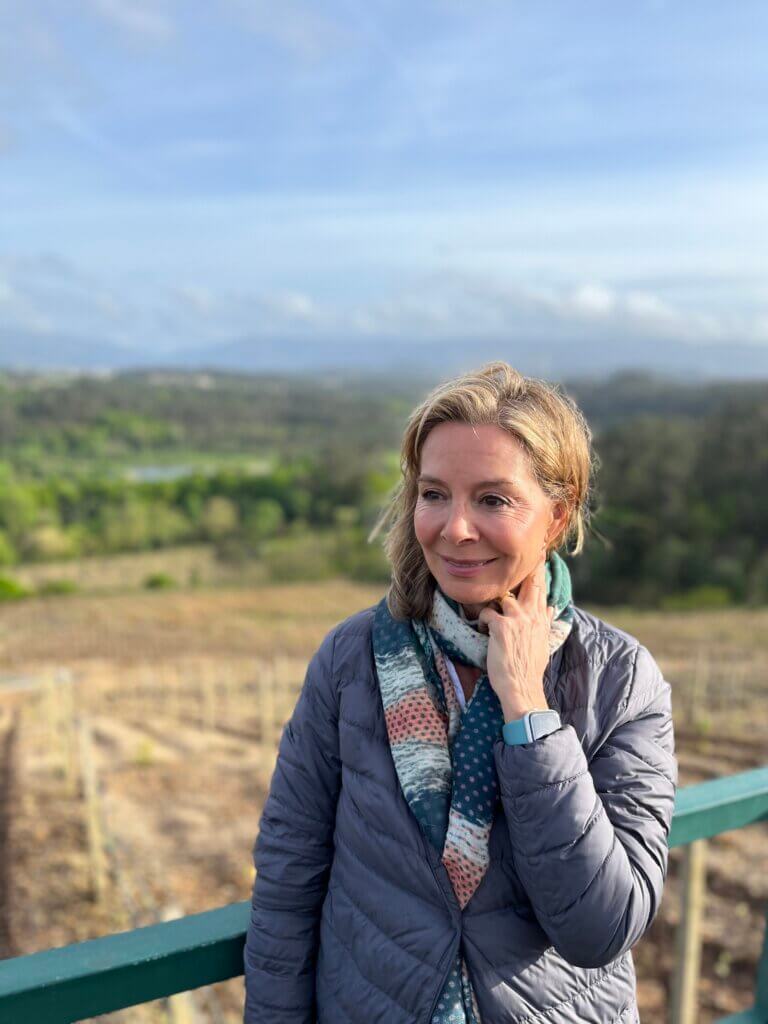
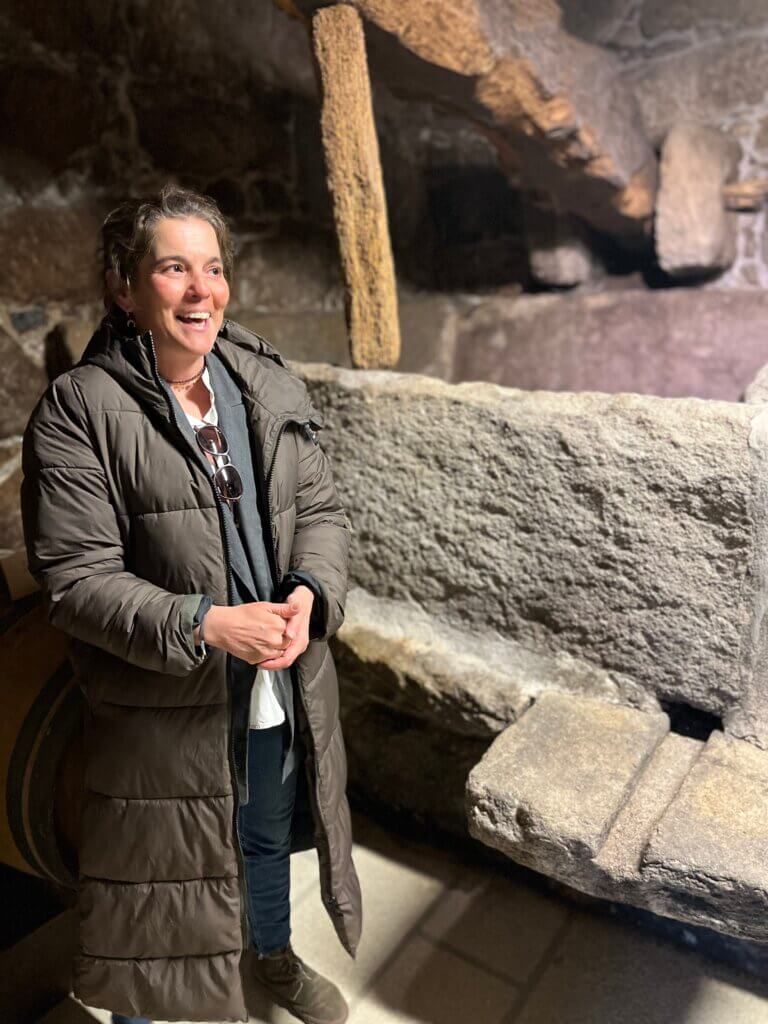

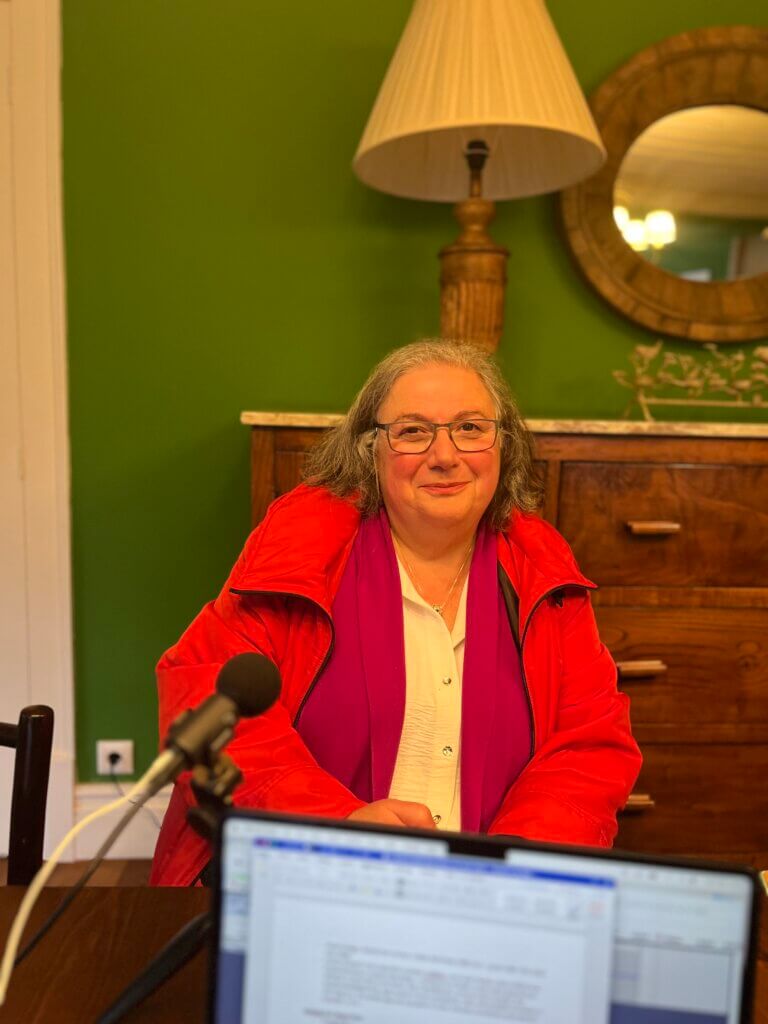
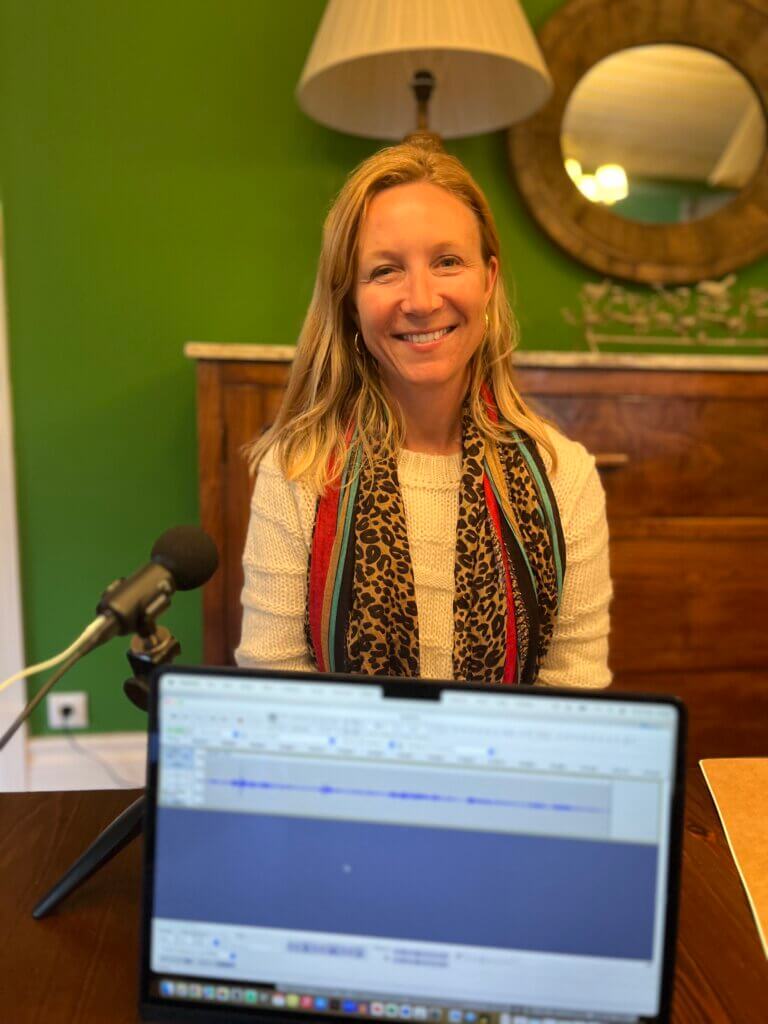
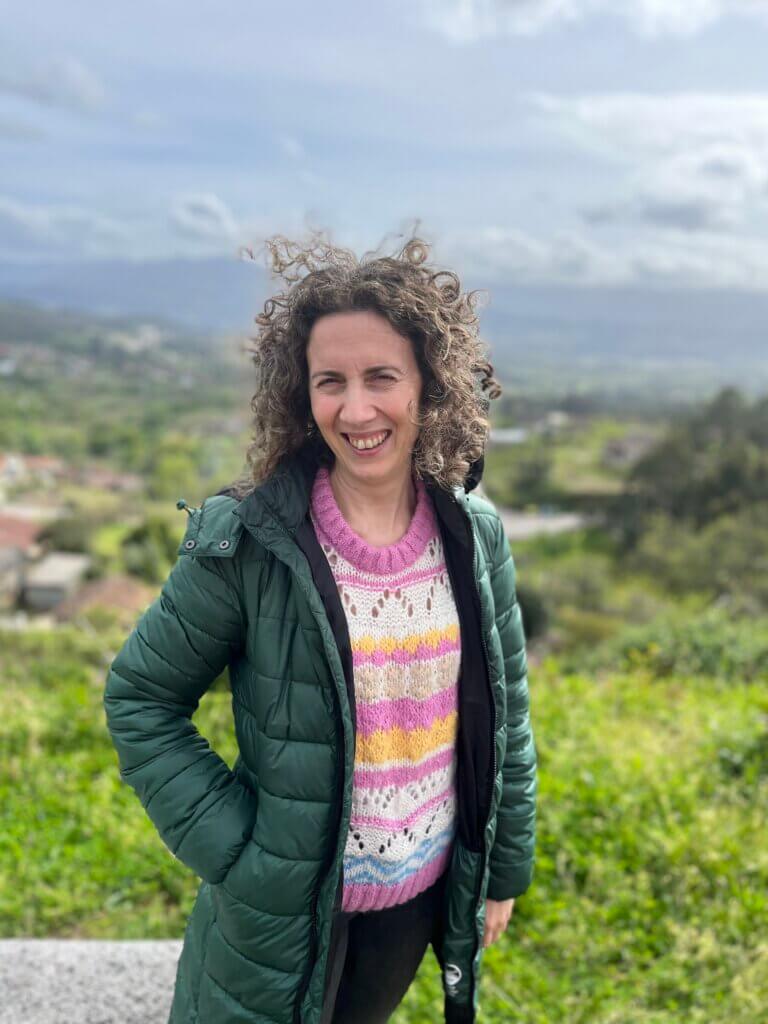
Wines
The following are Rías Baixas wines we tasted in April/May 2024 and recommend.
- Fillaboa Albariño 2023
- Fillaboa Selección Finca Monte Alto Albariño 2021
- La FIllaboa 1898 Albariño 2016
- Pazo de Almuíña Veigadares Entre Muros Albariño 2022
- Pazo Señorans Albariño Val do Salnés 2023
- Pazo Señorans Collección Albariño 2020
- Pazo Señorans Tras los Muros Albariño Berta García 2019
- Pazo Señorans Albariño Selección de Añada 2014
- Pazo Señorans Albariño Selección de Añada 2003
- Santiago Ruiz Rosa Ruiz 2020
- Santiago Ruiz Rosal 2014
- Attis Lías Finas Val do Salnés 2023
- Attis Embaixador Albariño Single Vineyard Val do Salnés 2021
- Señorío de Rubiós Godello Edición Limitada 2022
- Pazo San Mauro Sanamaro Sobre Lías 2021
- Albariño de Fefiñanes 2022
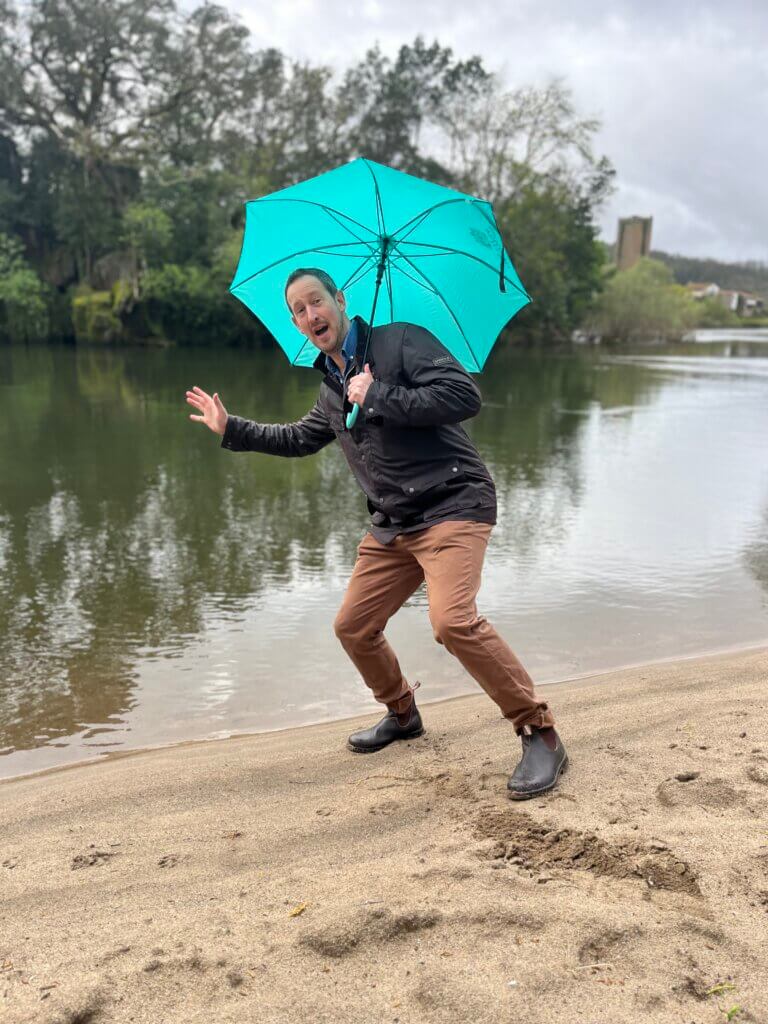
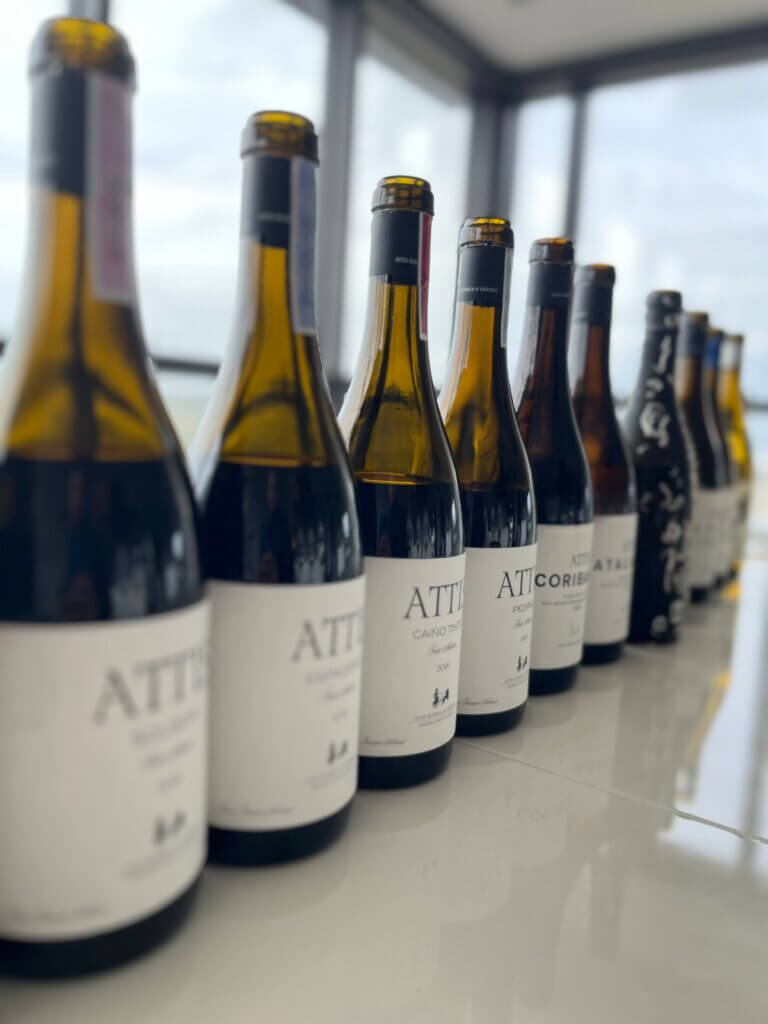
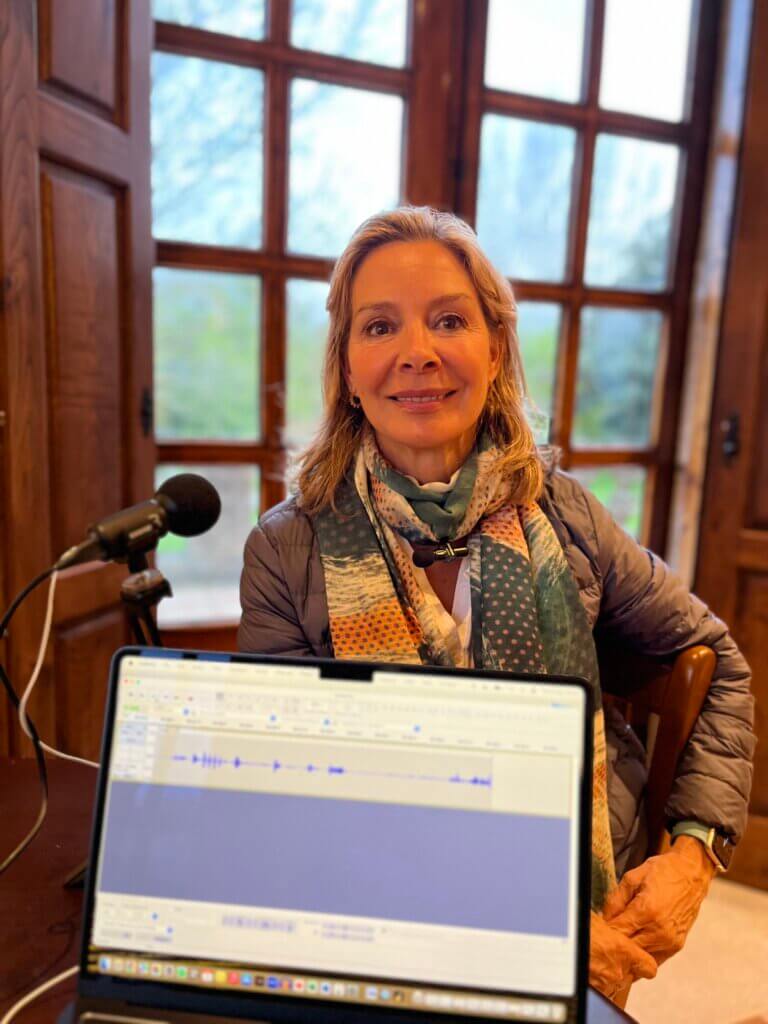
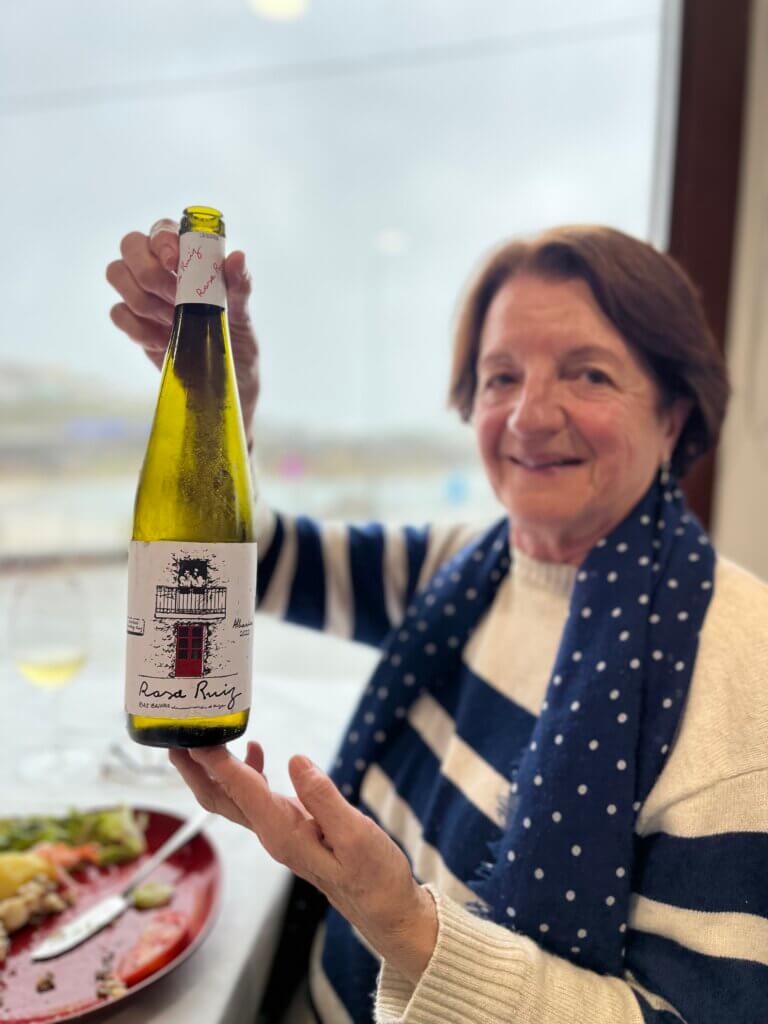
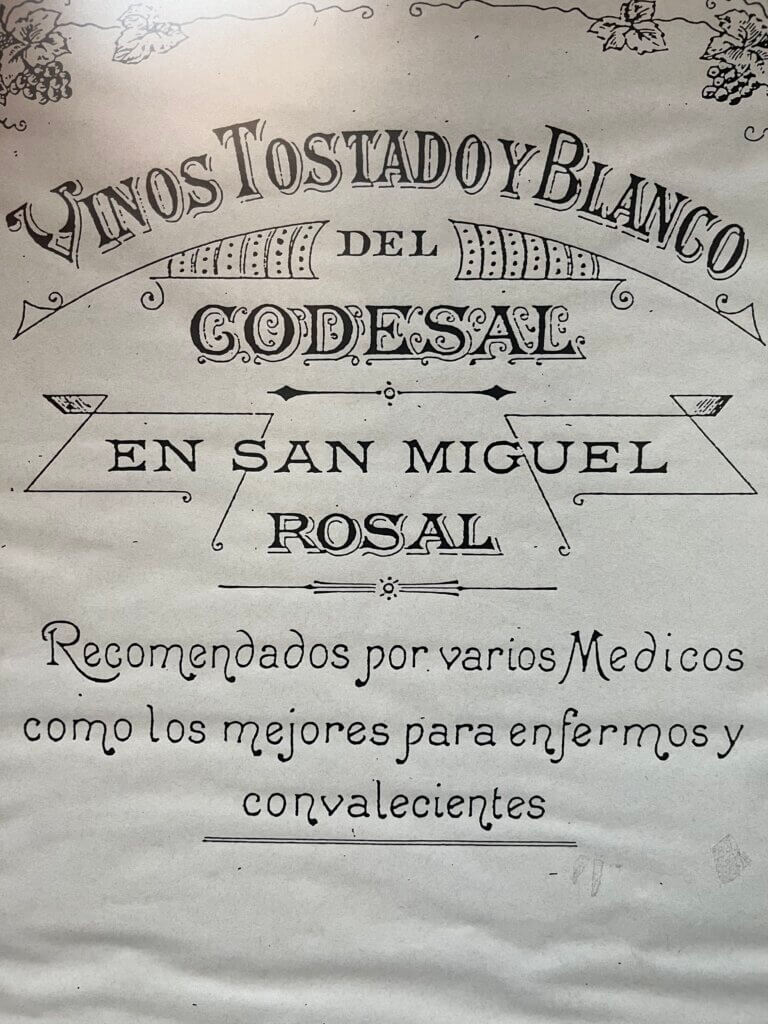
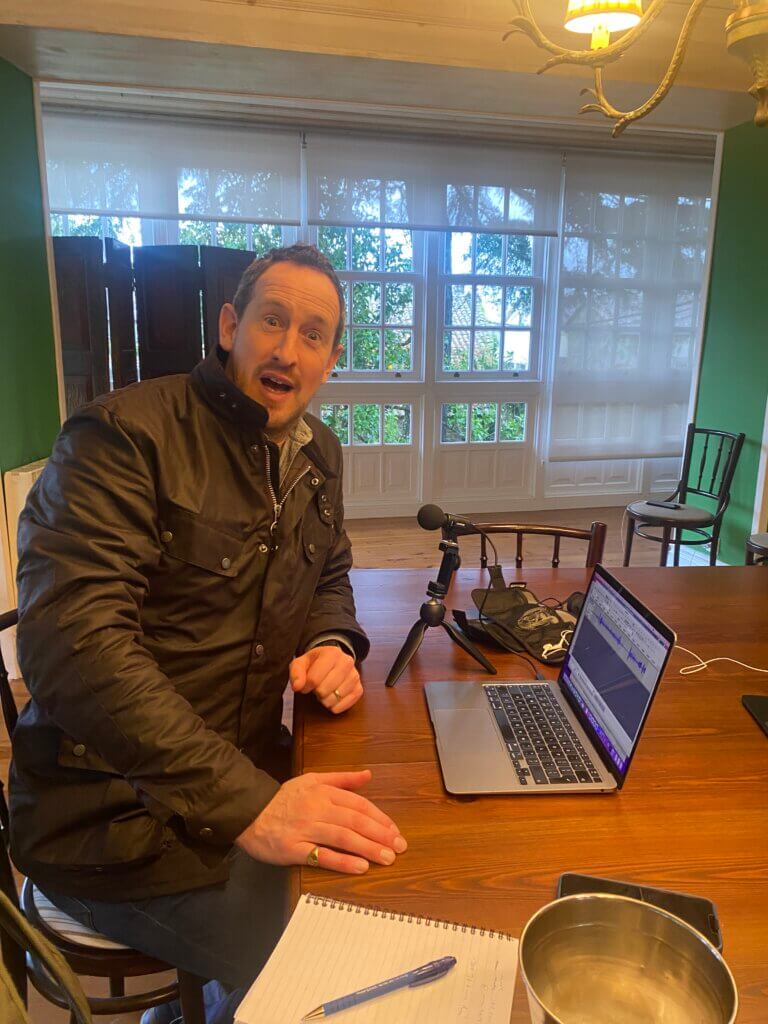
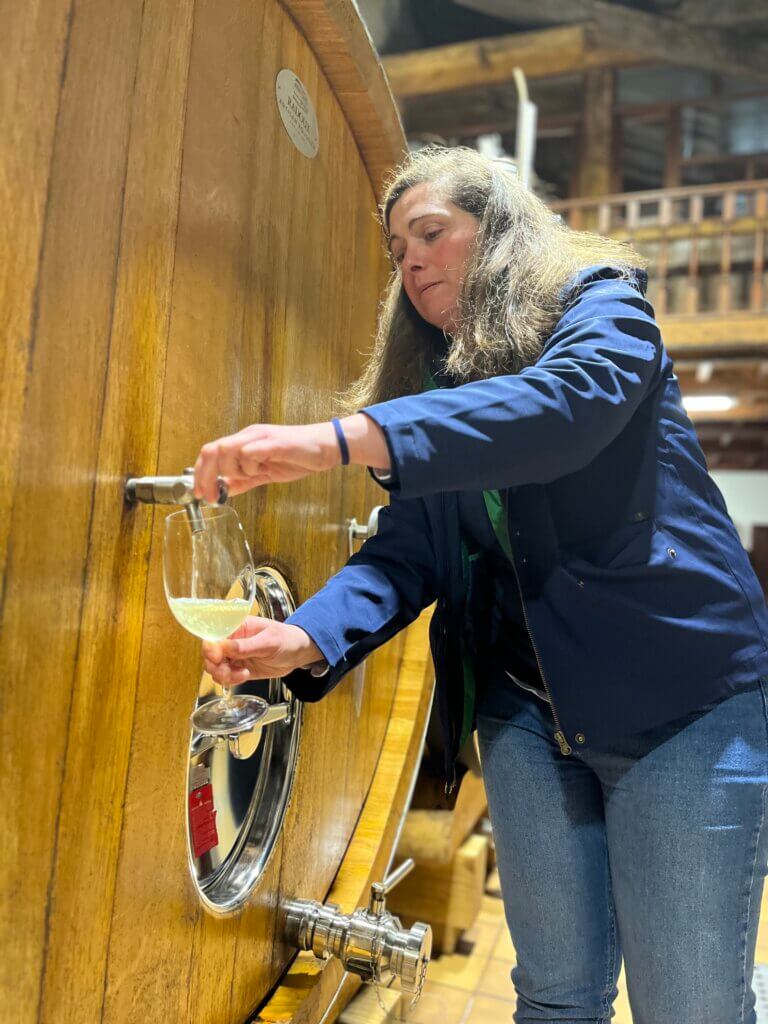
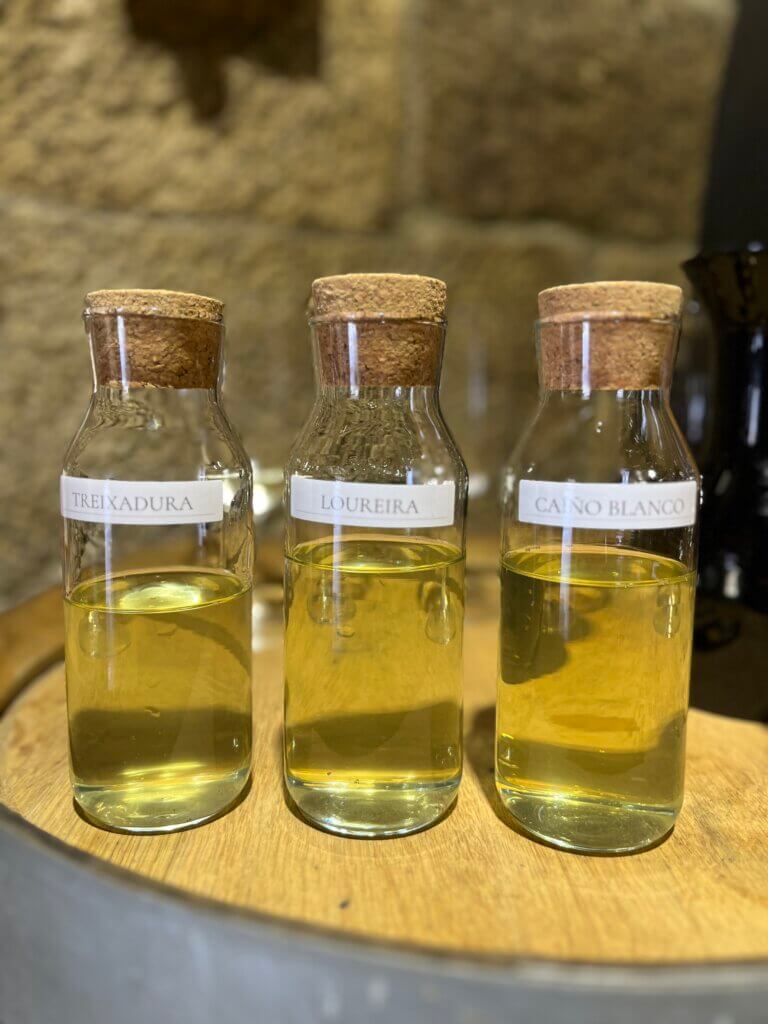
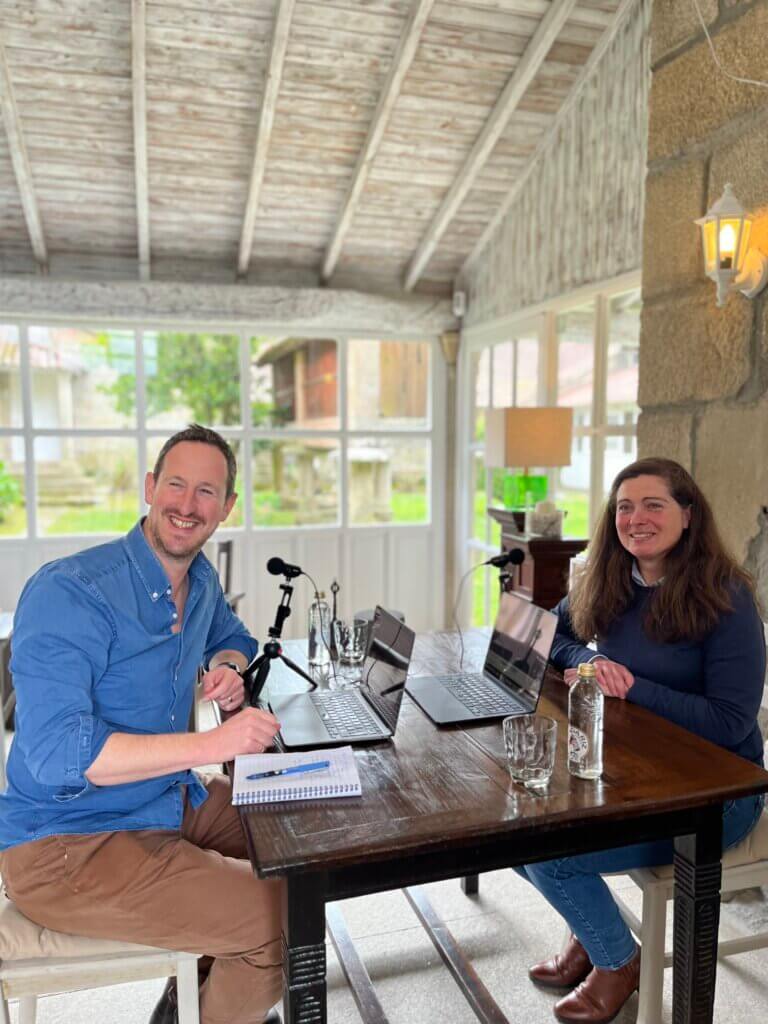
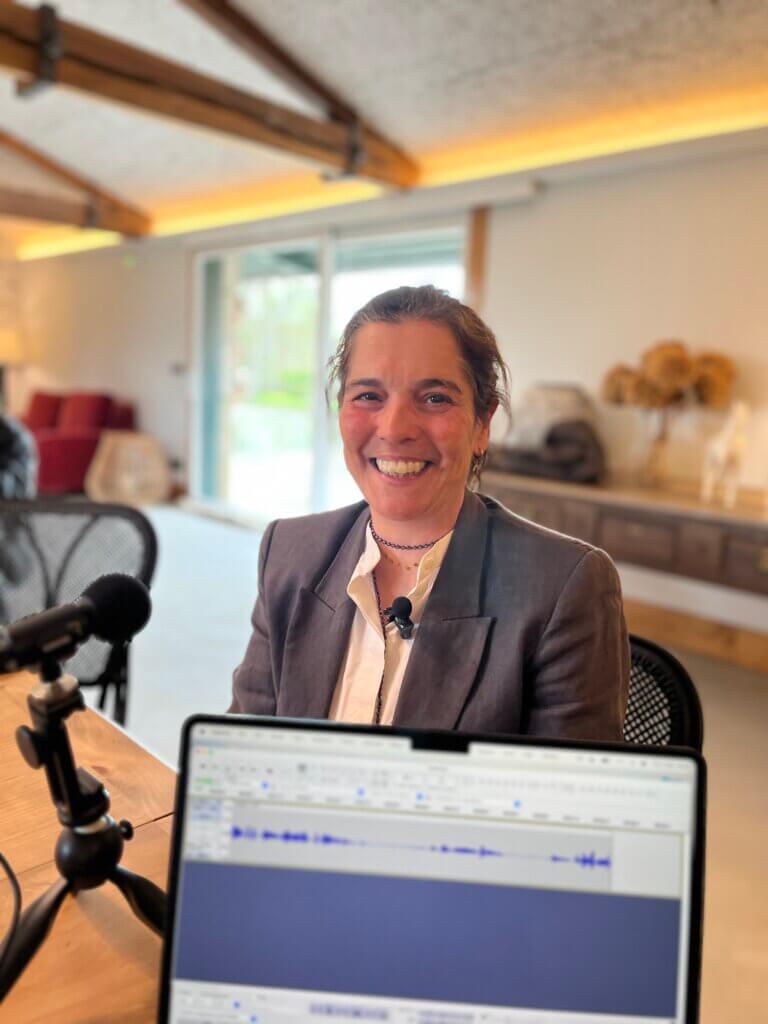
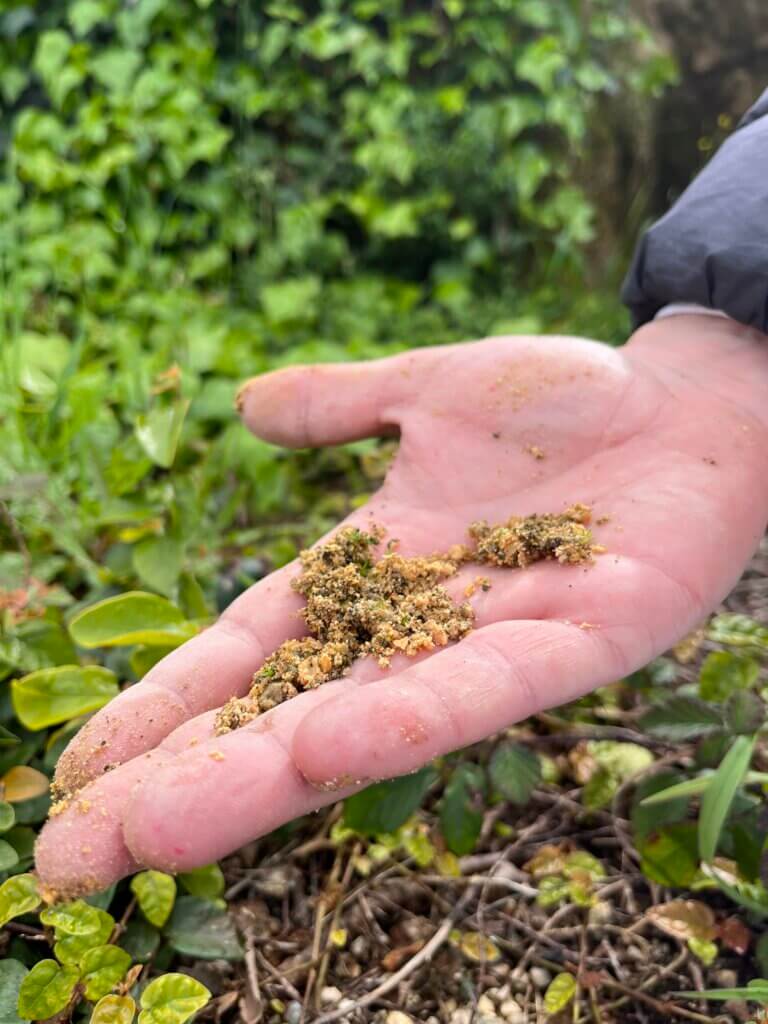
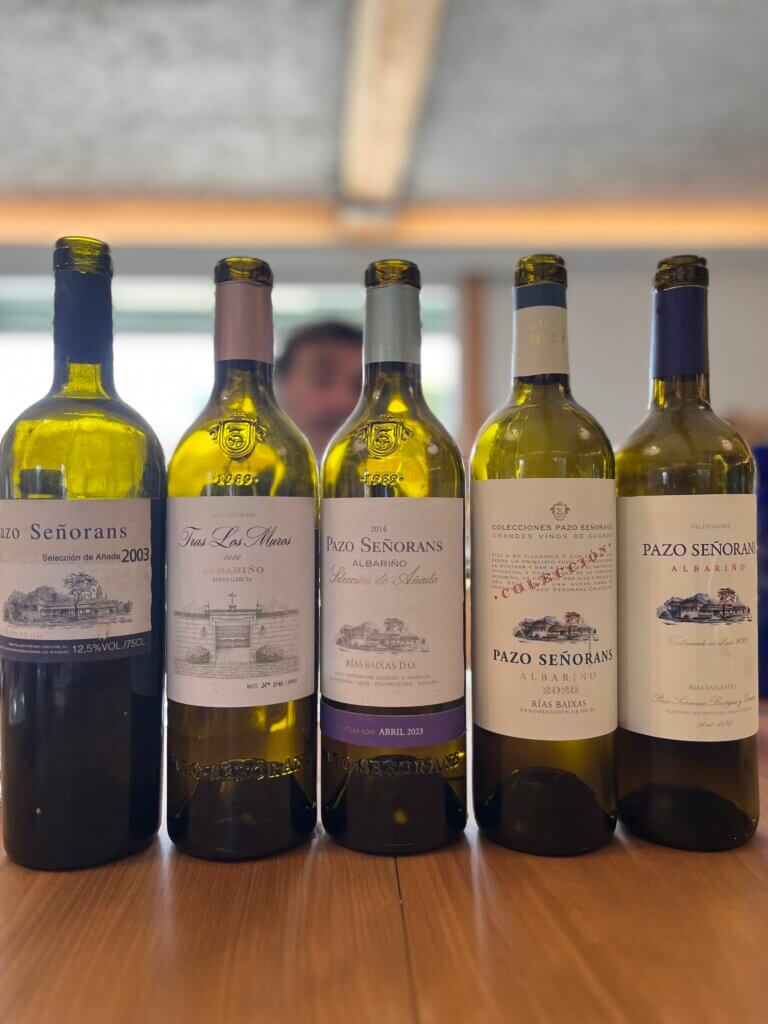
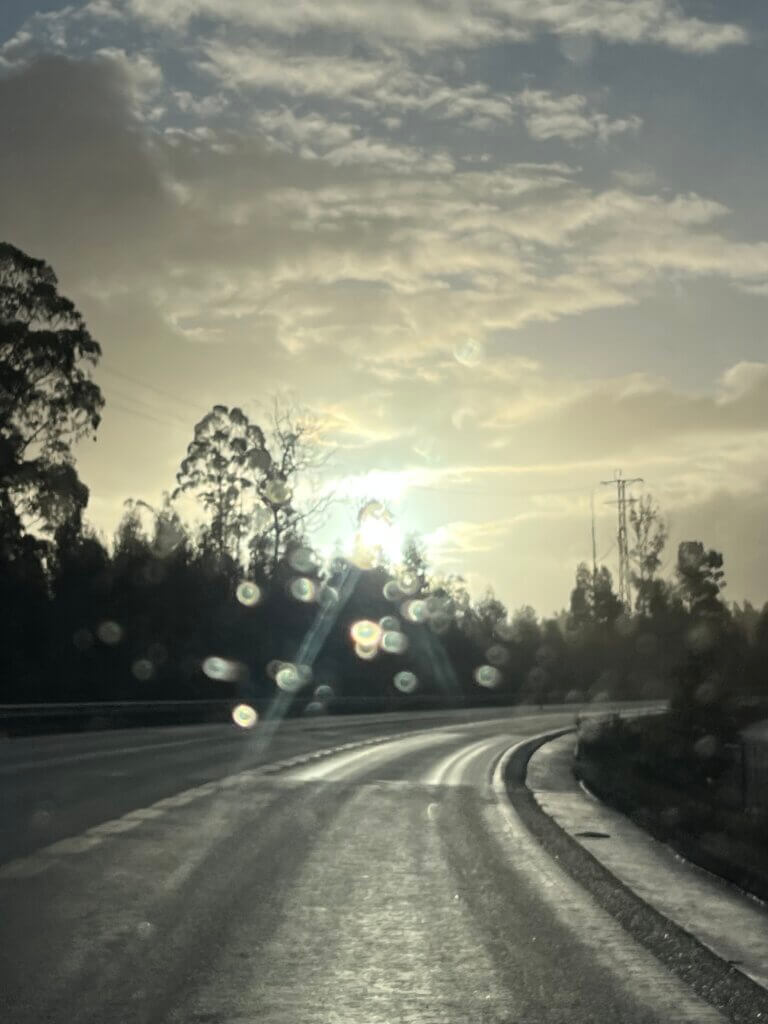
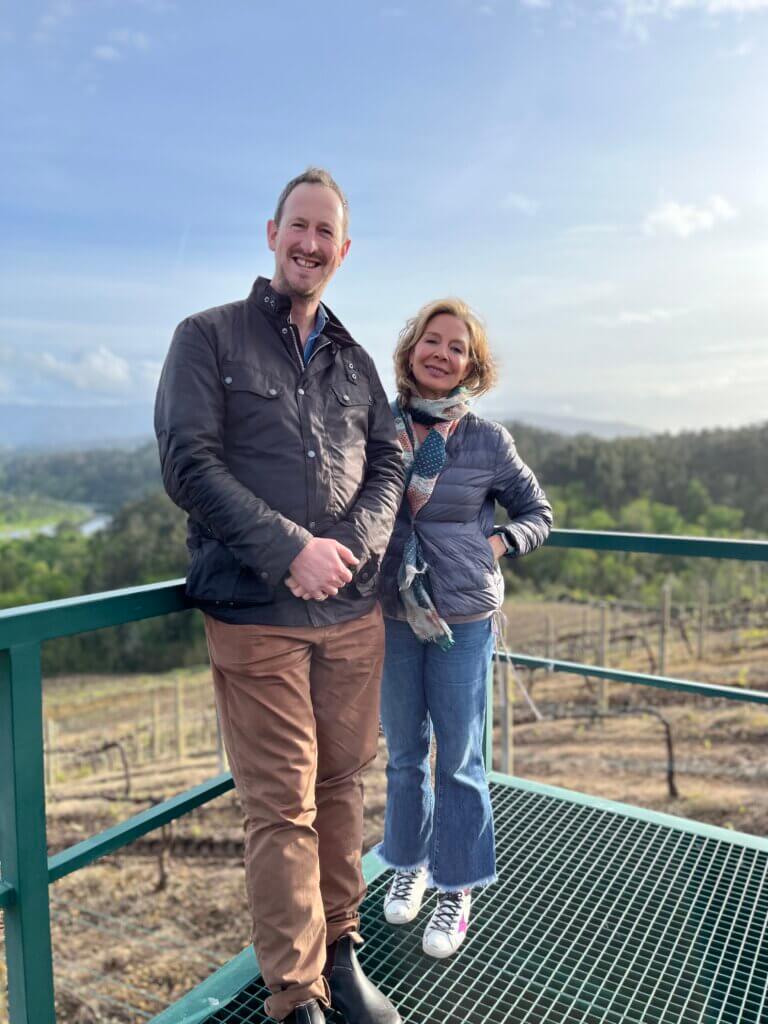
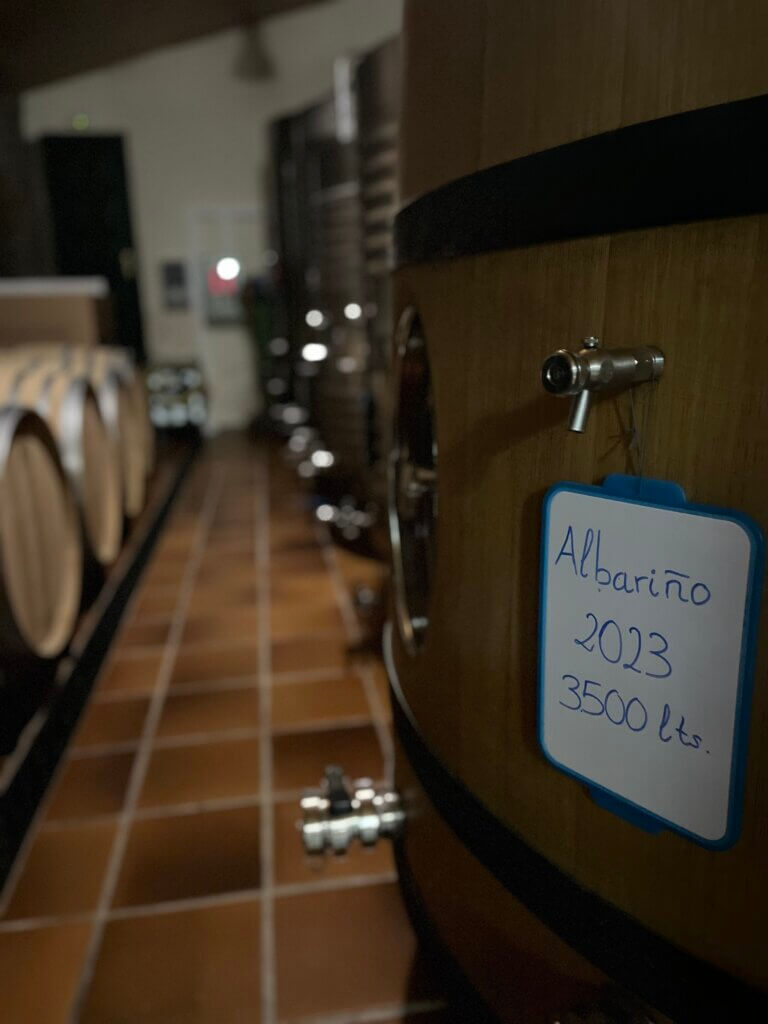
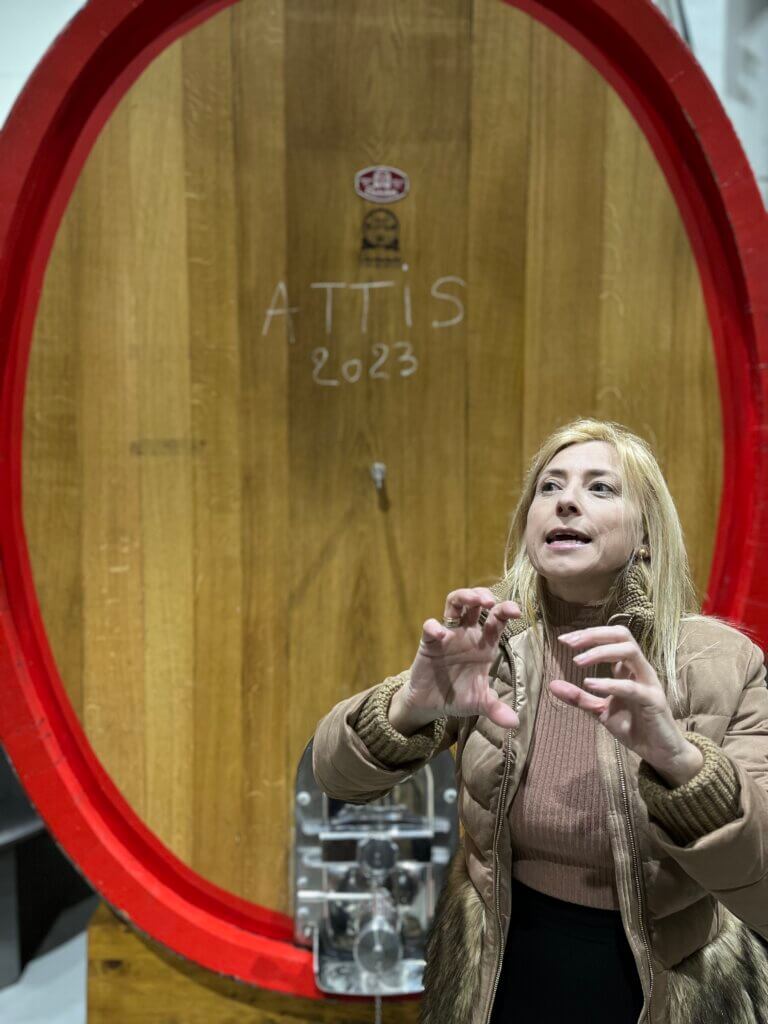
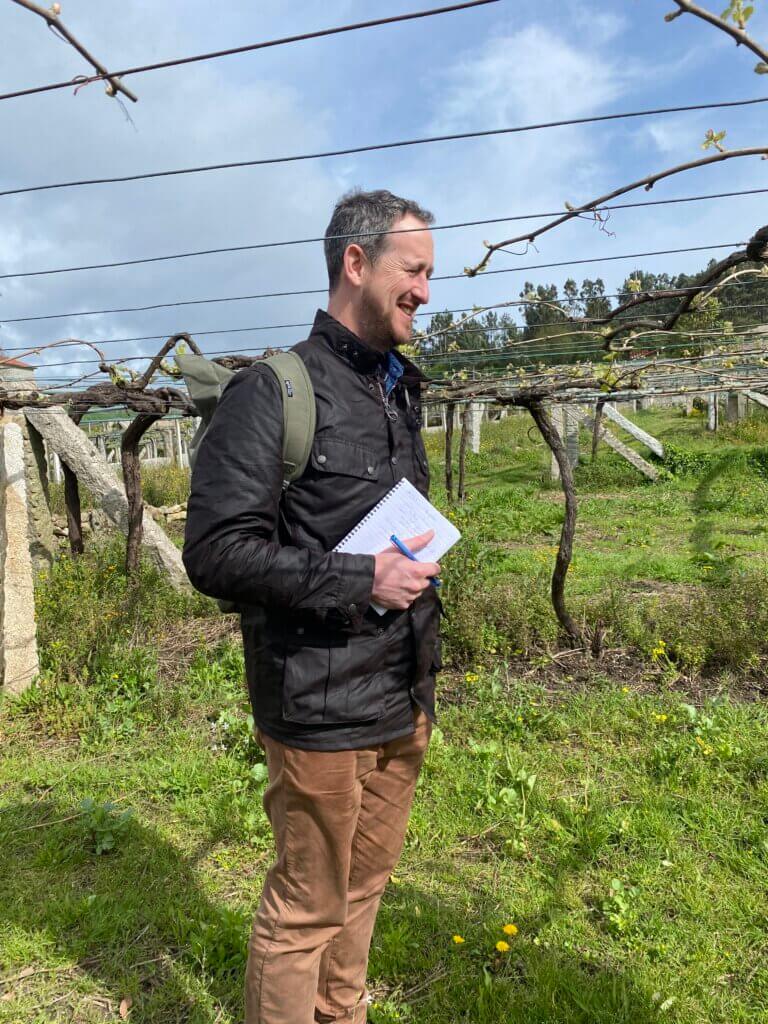
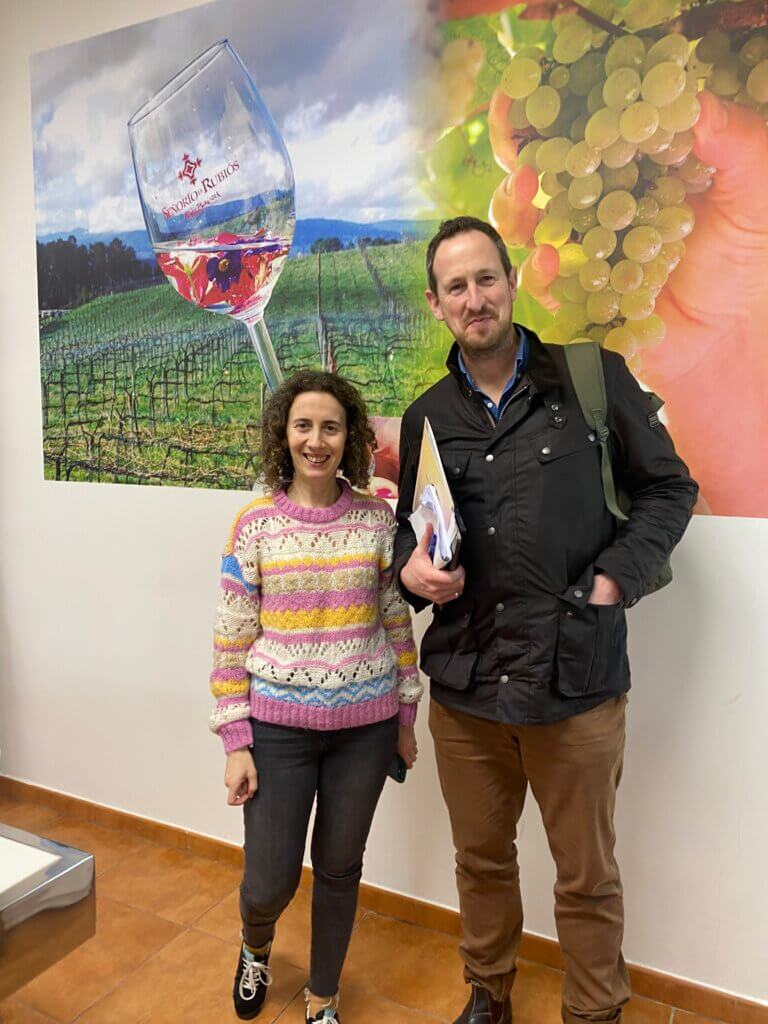
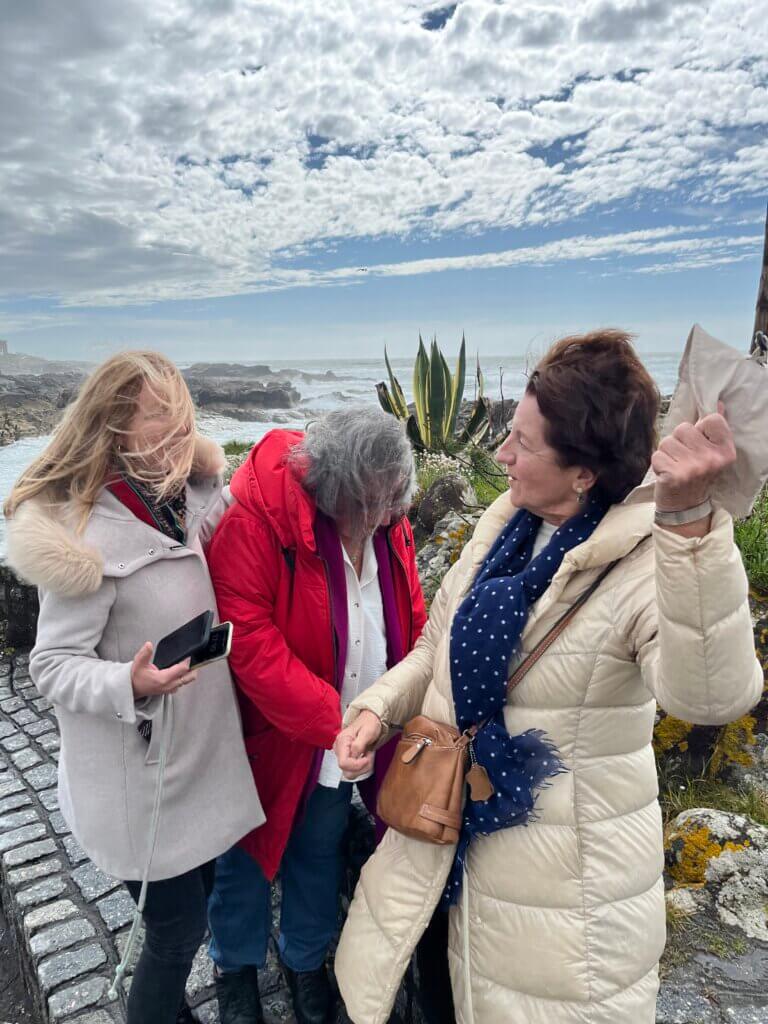
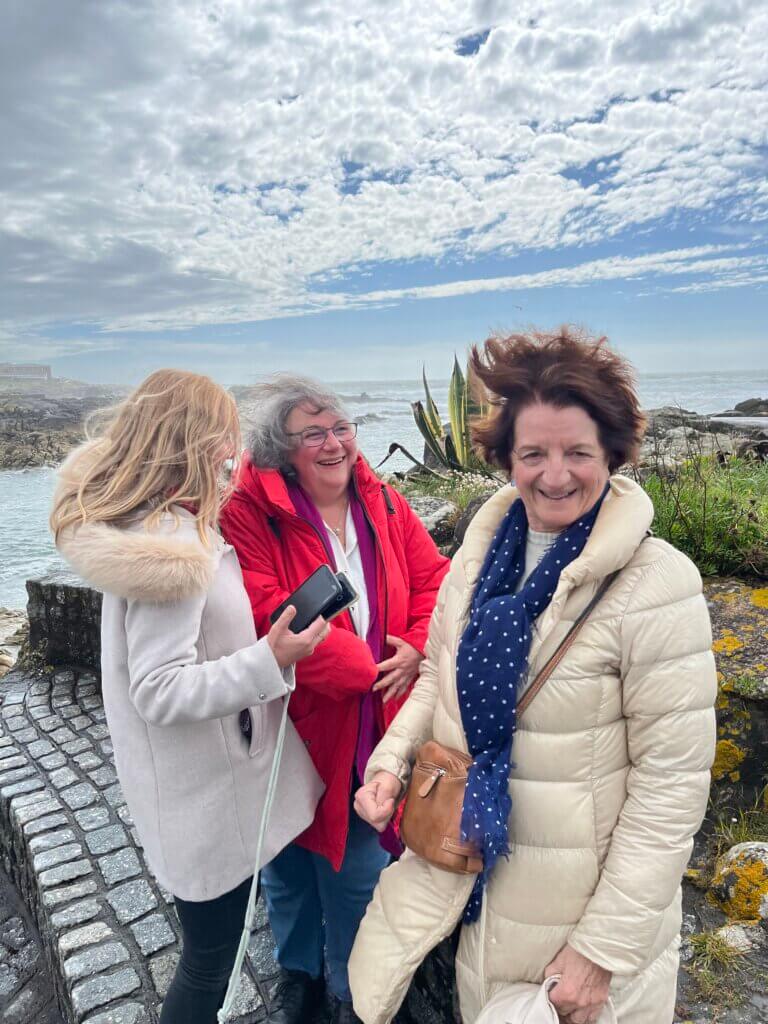
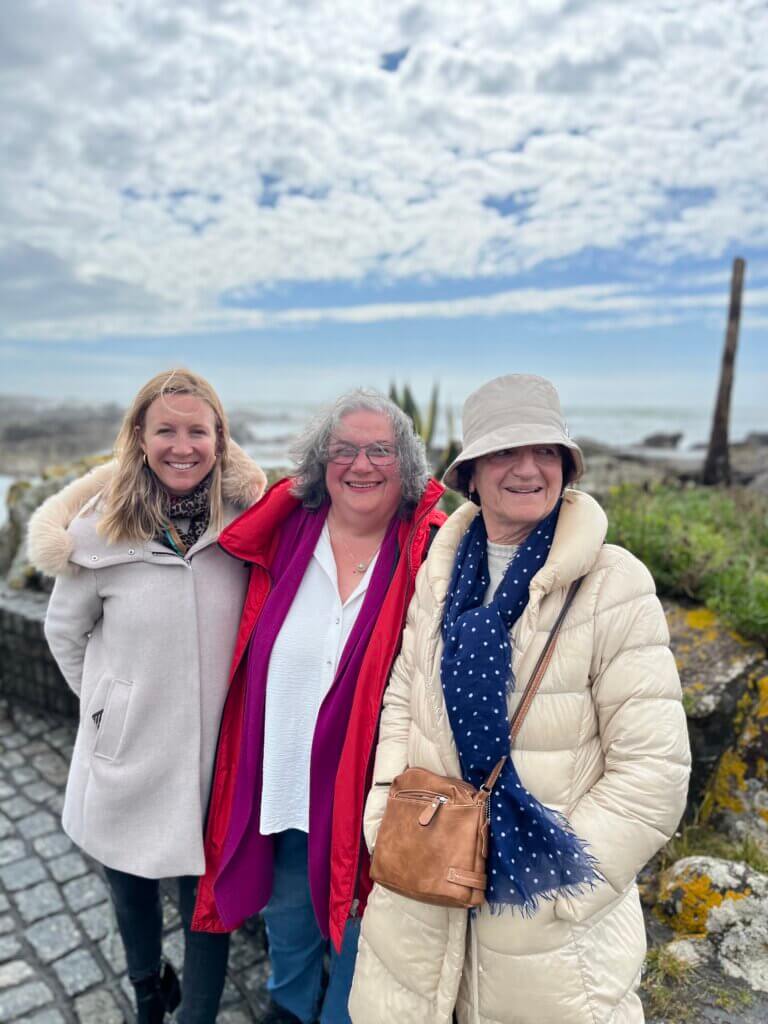
Links
- You can find our podcast on all major audio players: Apple Podcasts, Spotify, Google, Amazon, YouTube and beyond. If you’re on a mobile, the button below will redirect you automatically to this episode on an audio platform on your device. (If you’re on a PC or desktop, it will just return you to this page – in which case, get your phone out! Or find one of the above platforms on your browser.)
Get in Touch!
We love to hear from you.
You can send us an email. Or find us on social media (links on the footer below).
Or, better still, leave us a voice message via the magic of SpeakPipe:
Sponsorship
This episode is sponsored by DO Rías Baixas using EU funds.

Transcript
This transcript was AI generated. It’s not perfect. And clearly needs more training on wine names…
Susie: Hello, you’re listening to Wine Blast. I’m Susie, he’s Peter. Welcome to our wine fueled world! For this episode we have our heads very much in Rías Baixas in what is the second and concluding part of our focus on this intriguing wine region in northwest Spain. In our last episode, you called it the land of mists and mellow fruitfulness.
Peter: Yeah, well, I’m nothing if not highly original. and I certainly never rip off well known famous poets like John Keats. I wouldn’t dream of it. It’s all my own work. But I mean, I like that line here because I think it really does, capture, you know, what is quite a damp, sort of fertile landscape, heavily influenced by the Atlantic Ocean, you know, where vines run riot and the wines are just packed full of, of absolutely that freshness and fruit.
Susie: So maybe it is a land of poets and parties too. Anyway, either way, we just wanted to say, you don’t need to listen to that first part to enjoy this one. These programmes stand alone quite happily. And by way of brief recap, in the first part we set the scene exploring the place, the people, its history and food. we talked about the celtic heritage, the popular pilgrimage to the stunning cathedral at Santiago de Compostela, the ah, proud seafaring traditions, the importance of shellfish and seafood in the local diet, ah, the prominence of women in society at ah, large, and winemaking circles in particular. and I miss anything? Is that it? I think that was about it, wasn’t it?
Peter: It was pretty good. I mean, obviously wine. We did actually touch on wine.
Susie: Did I not mention wine?
Peter: You didn’t mention wine. It doesn’t matter. There’s so many other things.
Susie: I think it’s pretty obvious.
Peter: I mean, I think we love a good tangent, but even we struggle to get through an entire podcast. No, no, no. We talked about the vineyards and the wine as sort of part of the fabric of society as you, as you’ve touched on, you know, the fact that wine is intimately connected to all the things you’ve mentioned, the people, the place, the history, the food. we could call it the Rias Baixas lifestyle. Oh, love it if you like. But in particular, you know, we looked at the revival of red wine and the rise of sparkling wine in riasbayas, which are two sort of intriguing trends going on.
Susie: Absolutely. But I think. But now we’ve set the scene and we’ve looked at the trends, we want to cut to the chase and zero in on this region. Absolute USP, which is its unique brand of steely, refreshing, often complex, elegantly saline, generally food friendly white wine. In particular, the Albariño grape variety, which, dominates plantings here. It accounts for a whopping 95% reduction. And ultimately, we want to ask the question, what makes Rías Baixas Albariño special?
Peter: Yeah. Here’s a taster of what’s coming up.
Isabel Salgado: Albariño ah, is, for me, is the king of, the grapes. One of the best grapes in the world.
Vicky Mareque: with only one variety. It’s incredible how many different wines you are allowed to do. I think it’s a beautiful variety.
Luisa Freire: All that complexity that we have in the land is in the bottle, too.
Susie: Isabel Salgado of Fillaboa, Vicky Mareque from Pazo Señorans, and Luisa Freire of Santiago Ruiz there with, some bold words. We’ll be hearing more from them and other key figures in the Rías Baixas wine scene in the course of this programme. And we’ll also be recommending some pretty special wines as we go along.
Peter: That’s what keeps us going. and we should say thanks to the DO Rías Baixas for sponsoring these programmes and keeping us in the wine. Right. I know we set the scene in the first episode, but I do just want to recap quickly on a couple of key points by way of preface to this one.
Ries Baixas is quintessential white wine territory
so, Rías Baixas is a wine region spread across five subzones, dotted around coastal Garicia, just to the north of the portuguese border, which is formed by the Minho river.
Susie: Although red and sparkling do crop up, this is quintessential white wine territory. There’s evidence that the Albariño grape was here before the Romans. and this is cool climate viticulture, certainly by spanish standards, with invigorating freshness, very much part of the wines DNA.
Peter: But Galicia, for much of its history, was a pretty remote region and a land of the minifundio, which, are small holding properties. You see them there, they’re bursting with life. And from chickens to goats and vegetables, fruit and, of course, vines, now, contented self sufficiency was for long the status quo, the very antithesis of mass market commerciality. So it’s no surprise that when the modern wine era started in the 1980s, there was very little awareness of this region, or indeed of Albariño on the global wine market.
Susie: How times change, to recap on what’s happened since, in 1986, Spain joined the EU, allowing development funds to promote business and exports. In 1988, the DO Rías Baixas was created. there had been an appellation before, actually called Albariño but they needed to change that. So chose Rías Baixas Very quickly, the world woke up to the glory of Rías Biaxas wines, smitten by its unique Albariño based whites. The result was the appalachian vineyard, shot up from 237 ha in 1987 to 4480 today.
Peter: I mean, that’s just a, ah, massive.
Susie: Quite a jump, isn’t it?
Peter: You know, but some things stay the same. So, you know, this is still a land of minifundios and small growers. There are 5021 growers in the region and 22,362 parcels of land. Lots of numbers there. But essentially you’re talking a lot that works out the average parcel of vines being 0.2 ha, which is pretty much a large garden as we’re talking about a large garden. and, the average grower has just under a hectare, of vines in total. So 0.9 ha. So we’re talking small scale viticulture here.
Susie: I think it’s burgundy with a Galician accent, isn’t it? but just to follow up on those figures, the region has 178 wineries. Often growers sell to bigger producers or cooperative wineries. and total do production is about 37 million bottles, which is pretty small. RIoja for example, is 340 million bottles. But if you look at the trends, it’s all the same. Export figures, for example, show pretty much nothing in the early 1990s, 70,000 litres shooting up to 9.5 million litres by 2021.
Peter: So, you know, in short, Rías Baixas has been on a sort of wild ride of wine success over the last 30 years.
Susie: It’s on the up.
Peter: Yeah, yeah. I mean, there have been growing pains, which we’ll come on to. But this is one thing to keep in mind about the bigger picture here. The rapid metamorphosis of Albariño and Rias Baixas going from being largely unknown to this sort of global success story. the question is how, why and what does the future hold from here?
Susie: Yeah, so we are going to look at Albariño as well as the other local grape varieties here. We’re going to talk terroirino regions, blends, innovation and experimentation, oak lees, bottle age, climate change criticisms, competition, all sorts of things to get to the heart of it all. But to kick us off, you went on a wander, didn’t you?
Peter: I did. You know, as I want to do, both metaphorically and in person, you never quite know, and it’s not always entirely helpful. I’m very happy to admit that. but no, we want to zoom in on Albariño and the wine. So I thought it’d be helpful to get us in the zone, as it were, you know, the mindset, the Rias Baixas zone. So I recorded a little bit while I was walking through a vineyard, right next to the Minho river, actually, at the beautiful Paso San Mauro in Condado Do Tea. And here it is. So I’m walking through a beautiful vineyard in riospacias. The atmosphere, is very heavy and damp. It’s been raining yesterday. The sun is trying to peep through the clouds, but not doing a great job. The, it’s green everywhere. And the most sort of arresting thing, the most noticeable thing is the smell. And I wish, I wish we could recreate smell through audio, because if we could, you would smell the most amazing kind of heady cocktail of aromas. Wet, damp earth and trees, eucalypt freshness and wild herbs and laurel. All these things, they’re so wet and damp, you can just smell them everywhere. And down by the river Minho which separates Portugal from Spain, flowing fast. I’m just going past the little waterfall here. It is absolutely stunning. This is a, this is a really evocative world. It’s a world full of aromas and flavours and character and drama and just the most beautiful landscape. It’s not your hot, arid, sunlit vineyards you might normally expect. It’s a different world. It’s a world of freshness and aromatics and, and good food as well. So it all works really well, really nicely together. You can see the food growing around us at the same time. it’s a land of plenty, it’s a land of abundance, it’s a land where things grow and they have character and it’s really quite captivating,
Susie: Very lyrical! And didn’t someone else you talked to have a nice way of summing up Albariño sort of tying it in to the local landscape?
Peter: Yeah, absolutely. Absolutely. So that was Stephanie Schilling from Santiago Ruiz. or, I really like this because it’s a lovely way into albarino and sort of summing up these real, a spacious whites and what makes them special.
Isabel Salgado: When I try Albariño I always think about summer, ocean green, yellow, the smell. Of the wet grass, the smell of. The eucalyptus trees in Galicia, the smell of the orchids and the sensation, because it’s not like you smell it or so, but you feel it and you know it’s there, of the wet stones.
Susie: That is lovely. You really get a sense of the, of the wines and the plates.
Peter: Yeah, yeah. It’s really nice, isn’t it? I mean, she did a much better job than me, obviously, of summing it up. and much more concise. You know, that won’t surprise you, of all people, that I tend to bang on about things other people do much better.
Susie: You usually good at the chat.
Peter: Anyway. So, Albariño this grape, that is 95% of Rias Baixas production, what is it and why is it special here?
Susie: Good question. Yeah. Yeah. So it’s a popular grape. Pretty aromatic, although not as piercing or extrovert, say, as some sauvignon blanc or riesling or gowertstromina. It usually has fresh acidity and fresh flavours as a baseline. You know, think apple and peach and orange blossoms, some fresh garden herbs, honeysuckle, that kind of thing. But it can respond well to ageing, both on the leaves, the dead yeast cells after fermentation, and in the bottle when it becomes richer, and more golden, while retaining that underlying freshness. It can be oaked, but usually it isn’t. And we’ll come back to this. And riospacious alburinho often comes with an underlying tension and minerality and a subtle, saline, even bittersweet hint on the finish. That is quite distinctive.
Peter: Yeah. And there’s often a sort of intensity and complexity to Rías Baixas Albariño that you struggle to find elsewhere. Isn’t there a sort of, dunno, sort of rugged, piercing quality that really gets the senses firing? So it’s, you know, rather than you’ve been tangoed, it’s almost like you’ve been Alberino’d, you know, that sort of thing. Do you know what I mean? Gets you going.
Susie: I do. Anyway. So, Albariño it does seem to have a long history in this part of the world, which may be why, and that may be partly because of the fact it has naturally thick skin, so it can resist grape rot like botrytis, which is a risk here, given rain and humidity. Can be issues in this kind of coastal territory with lots of rivers and bodies of water. And it also ripens well, giving good sugar levels. Hence there’s often a fair whack of alcohol in the wines.
Peter: You know, one final point about Albariño is that it’s a pretty vigorous vine. which is why the traditional system of training it in Rías Baixas is on pergolas, so up high. this also means the grapes are sort of well ventilated. Again, important to controlling rot. there are more modern versions or alternatives nowadays in the region, but lots of people still retain this, this training method. For example, Isabel Sagalo, of Fillaboa said she’d done trials comparing training systems like, you know, VSP, which is the modern one you see in all the modern wineries versus the pergola. And the results were really similar, actually, in the grapes and the wine. So, you know, she’s sticking with the pergola because, you know, she says it’s the best system in our area and it’s traditional. So, you know, it balances the plant’s vigour, it, maximises photosynthesis and it gives, you know, the best wine.
Susie: Anyway, well done for bringing in Isabel because it’s who we’re going to hear from next. Isabel is an experienced and brilliant winemaker who’s been making wine in the region for almost 30 years. She says she remembers the early years when the producers were learning about Albariño and it was a new thing in the markets like, the UK and Europe, and that it was hard work. But then she says, over time, and I quote, we got famous because they travelled and showed the wines and people just loved them.
Peter: Yeah. So I asked her to sum up Rias Baixas.
Isabel Salgado: Rias Baixas is a, magic place. I’ve been working here for almost 30 years and, I think it’s, a region that has something special, different for other regions. They influence the Atlantic, influence all the winds from the sea. And also the soils are very special because our granite soils, very acid. And the wines that we have here are very. Had high acidity. And I think they are very different from other wines in Spain. I think that Rias Baixas is very unique. If you compare with other regions in Europe or in other parts of the world, I think it’s special. Yes. Special place, yes.
Peter: so let’s turn to Albariño Now, you’ve worked with Albariño it’s been your life’s work, if I could put it like that. What’s so special about Albarino?
Isabel Salgado: Albariño for me, m is the king of the grapes. One of the best grapes in the world. I think I tasted a lot of varieties around the world and wines from several parts of the world. But albarino has a structure and flavours and aromas and has a quality and characteristics that allows, the wines to evolve and to age very well. So you can make very young wines, but then you can make long lasting wines and very interesting and very great wines. I m mean excellent wines.
Peter: So you make wines in both of those styles. Young wines and slightly older wines. Describe to us what a ah. Great young albarino should taste like. And then what a great mature Albariño should taste like.
Isabel Salgado: A ah. Young albarino. You can feel all this fruity aroma, ah, like pineapple, citrus, pear flower. A lot of aroma which are primary aroma that came from the grapes. And then When it evolves you can find another aromas disappear or I mean another aroma appear. And You can feel for example more Yeast aroma or bakery dried fruit for example. And then you can feel in the mouth, feel, you can have the softness. And ah. A Very well integrated acidity that you don’t have in the young wines. That you can feel the acidity is more presence. And then when you have a wine that has two years old or more you can feel. You can see that this acidity is more integrated.
Peter: You’ve described beautifully a mature alvarino there. Do you think we should be ageing our Albarinos a bit more than we do? Should we be putting them in the cellar and letting them age in a bottle?
Isabel Salgado: Yes, because I think it’s a good thing. Now we realise that this is One of the best qualities that Alvareno has. But when I started working, nobody made an Alvarino like this. Always the people ask for a young Alvarino. Always.
Peter: What makes. Obviously Albariño is grown in different parts of the world.
Isabel Salgado: Now.
Peter: What makes Alberinha from Rias Baixas special?
Isabel Salgado: I think the soil, the situation, the location and The atlantic influence and the weather, everything. And also the training system. Because if you plant alvar in another soil in another influence you will get another. Another thing.
Peter: And what about in the glass?
Isabel Salgado: I think that that acidity that has Rijas Baixas, wine is different for other places. The acidity is something that. And the aroma. The aroma also. Yeah.
Peter: To what extent can Albariño reflect its. Its terroir? And how much more do you think we have to understand about that?
Isabel Salgado: One of the characteristics I think very most important in Alvarino is the minerality. And then ah, you can, this you can find when Alvarino you age and Alvarino.
Peter: So it comes with age.
Isabel Salgado: With ageing, yes. You can feel more the soil.
Peter: Is that anything to do with The contact with the lees in the tank when it ages?
Isabel Salgado: Yes.
Peter: Does that sort of bring out the. A sense of minerality?
Isabel Salgado: Of course. Yes, this is really important. The contact with the leaves. The leaves protect from the oxygen and also give a lot of aroma. And polysaccharides and monoproteins that give softness and mouth feel, but also a lot of aroma. Different aroma from a young alvarina.
Peter: And we’ve just tried, some of your delicious wines, including the La Fillaboa 1898, which was aged on the lees for six years.
Isabel Salgado: Yes, it’s 2016 vintage and now we are in 2024, so it’s eight years. And you feel, you see, that the wine is very young, but the evolution of the wine is totally different from,
Peter: So would you say that ageing on the lees and bottle age are the two keys to unlocking the potential of Alberino?
Isabel Salgado: Yes, you are right. Totally right.
Susie: So we did touch on this in the last programme, but here we have it from one of the leading Rías Baixas winemakers, probably one of the least leading Albariño makers in the world. Albariño is world class. Whether it’s the king is up for debate. but it’s in the mix. And as Isabel says, it not only makes great fresh young whites, but it also comes into its own when aged on the leaves and then aged in bottles, showing more kind of terroir and complexity.
Peter: Totally. So I mentioned the Fiaboa 1898 there. this is an absolutely stunning wine. 2016 vintage is only the second such wine they’ve made. The first one was in 2010. It’s all fruit from their beautiful, windswept, seriously steep Monte alto vineyard, which overlooks the Minho and tea rivers. Very, special, beautiful, spot. It spends six years. Six years on the leaves in stainless steel tanks with regular steering or batanage. And it’s epic. I mean, it’s glorious. It’s just packed full of bready, yeasty, patisserie sort of flavours. Then you’ve got roasted lemons and peach. It’s just rich and honeyed and succulent and layered and foodie.
Susie: I get the feeling you like it. Yeah, it does sound pretty special.
Peter: It is, it is, you know, but one thing I noticed was that this wine, it’s really inviting and fun and enjoyable. You know, I think if I’m going to criticise somebody, a spitious whites can be a little austere sometimes, you know, particularly when they’re young, and not necessarily the most user friendly. You know, you could understand the context of it. But Isabel’s wines, I noticed, were really approachable and engaging, you know, from her basic fiaboa 2023 which is just full of pear and peach fruits. Really juicy and appealing. It’s almost like a kind of New Zealand sauvignon blanc take on riospices Albariño you know, in a good way. and also then her finca, monte Alto Albariño 2021 is sort of like a stepping stone between these two wines. That one spends two years on the lees and has a wonderful rich texture with ripe apples and hints of honey and brioche. It’s really, really good.
Susie: So were going to come m back to things like terroir, arent we? And the importance of ageing Rías Baixas Albariño among other things. But for now, lets just take a quick break to summarise. So far, Rías Baixas has gone from zero to 60 in just a few decades, finding global success with its unique whites based on the characterful Albariño grape. This is a region of small growers, but big, majestic, serious whites that express terroir and age really well. But we’re not just talking one monolithic style. Diversity beyond the ageing is in the mix, too, isn’t it?
Peter: Absolutely. And that’s what we want to get into now. I think sometimes there’s a perception that Rías Baixas is all about Albariño and Albariño is always fresh and crisp and fruity. And that’s it. But that’s not it, you know, that’s the kind of, don’t know, supermarket reality, if you want to put it that way. It’s one side of things, but it doesn’t tell the whole story.
Susie: Okay, so one of the reasons Rías spicious wines are more diverse than they may at first seem. M is that this isn’t just one big homogeneous region. As we said at the top, this is a region of five subzones dotted around in different areas. And they can all make slightly different styles.
Peter: Yes, there are a couple of tiny subzones. Soutomaior near Pontevedra and ribera do Ulla near Santiago de Compostela. but then the three main subzones are Val do Salnés in very coastal territory around the town of Cambados, which is by far the biggest sub region. This one, it’s got 50% of the vineyard and 70% of the growers saness. and then the two subzones in the south of the region, along the Minho river and the border with Portugal, are, O Rosal in more coastal territory, and then Condado de tea, more inland.
Susie: And the very different terroirs can give different characteristics to the wines. So by way of very broad brushstrokes, Salnés wines tend to be fresher, higher acid, more tense, very pure, and often with a salty, briny hint on the finish. They’re often 100% albarino. O Rosal can be quite aromatic and peachy. And then Condado Do Tea more inland. The warmest and driest area tends to make richer, fuller bodied, fleshier styles, often quite complex and powerful. Albariño is usually blended in O Rosal and condado do Tea with things like treschadura and Lourera, which can also obviously influence the style.
Peter: Yeah. so while I was hurtling around these various areas in our car, often in the teeming rain, it is.
Susie: Such a region of rain, isn’t it?
Peter: I so remember. maybe it’s just when we go there. While I was doing that, I got some producers views on what makes their subzones different. first up, I asked Vicki Mareque from Paso Señorans if Salnés her region had a particular characteristic.
Vicky Mareque: Yeah. For me, for example, this bitterness at the end when they are young, is very typical. From Salnés valley. We are still probably 90% or 98% in the Salnes valley is still in pergola, system That also changed a little. The ripeness and the climate is a bit different. All the super regions have different climate. And, also the way of producing here, normally we produce 100% albarino. In the rest of the valleys, as you know, they mixed up with the other typical varieties that here doesn’t ripen correctly. the acidity is higher here. So they are a bit different. Yes. the dry extract, I really don’t have knowledge enough about the other regions. But here it’s quite high. So where a structure can be intense and powerful.
Peter: Then I asked Luisa freire from Santiago Ruiz about O Rosal
Luisa Freire: the rosal is a, mature climate. we can take orange, we can take cuigui, we can take flowers, we can take vegetables. In the rosale, all the worries in this little space. We have the river, but we are very near the sea. We have hills, we have stone, but we have pebbles. it’s a blend. When you take the different grapes, you take the albarino, the caineo blanco, the trishadura, the godello. All that complexity that we have in the land is in the bottle too. and then for me, Rosales, that is complicit, but a, good complexity. you can taste and, ah, you can smell and you can put in a mouth half body in the inhabiter.
Peter: Finally, I asked Natalia Rodriguez of Señorio de Rubios about Condado Do Tea.
Isabel Salgado: In the area of Condado Do Tea. the climate is less aggressive than the part of the coast. We are near to river Minho protecto. The slope of the Montaise and the albarino is very fruity with, less acidity. If you compare, for example, with Salnés of other areas, good balance between the acidity and alcohol. Fresh, I think, is one of the most important difference if you compare with other albarino in Rías Bayas.
Susie: So we’ve got the climatic differences between the subzones, but we’ve also got the different grapes going on. So more pure Albariño in Salnés and then more blue blending in O Rosal and Condado Do Tea. And that’s obviously going to have an effect on the wine style.
Peter: Of course, of course. And what’s interesting is that because Albariño has become so popular and a star name, there’s a danger that the blends made with these other traditional local varieties would be sidelined. but it’s really good to see some producers remaining fiercely loyal, to the blends, which are a historic style, just as it is over the river, the other side of the Minho river in vino Verde territory in northern Portugal.
Susie: And didn’t you do a tasting that focused on these other varieties?
Peter: Yes, ategas, gallegas with winemaker Lucia, Barbosa We tried a bunch of these other white varieties and it was really interesting. so Tresia doura has big berries. it can be quite neutral and it’s often used, actually to bring down Alberino’s naturally high alcohol and sort of soften the blend. Loureda often smells of laurel. that’s what the name means, especially, if it’s picked early. M so it can add sort of leafy complexity to a blend. if, it’s harvested later, though, it can give more full bodied. It’s a little bit versatile in that sense. I like this one. When I tried it, I think it was a more earlier harvested version. It was fresh and appley and floral with really tangy acidity and good structure. and then cainho blanco, for example, ripens late with small berries and lots of seeds. So it can give sort of tannins and complexity and sort of pithiness to a blend.
Susie: And presumably the good blends make for naturally more complex wines.
Peter: Yeah, I think so. I mean, it’s just a different style isn’t it? Lucia described it as like, using salt and pepper. You know, the tools to give a wine complexity. Without resorting to winemaking tricks. I asked her why she uses blends.
Lucia Barbosa: I think diversity is always good here. We, respect the past using the grapes that are here from the past. We are in the border to Portugal, in the cross of the Minho river. And the white grapes that we have here from several centuries. We have studies and we have translations. that, they are here. We have the Trisha dura, the Loreta, the Caino blanco and Dalberino. And if we can preserve these old vineyards, we have a future. We can respect what the old people have here and improve several things. And, gave a product, distinct. Auverino is everywhere. No? all world have a varinho. But, here, in a traditional way, people blend the grapes to do his wine home. So in a year that can be very dry, alvarino can suffer, with low acidity. Maybe kino can help me with that. And gave me a little bit tonicity. that can help to put, the blend in balance. So these different grapes are a respect from the past, but use it as a tool to improve, the winemaking of our days.
Peter: Yeah. And what is your take on alberino? As you know, as you said, it is a very famous grape from this region. It’s the majority of production from this region. How do you see the grape and, its style?
Lucia Barbosa: It’s a fantastic grape because we can do different products with the same grape. But we need to know if we choose alvarino from near the river or if we choose alvarina from the top of the mountain. Of course, we will have different profiles. I can have, fruity carater of an alvarino that came from a rich soil with a lot of fertility and, vigorous vineyards. And, of course, it’s easy to drink. It’s a navarino with a lot of, tropical fruits, apples, heterose. Nice. But I can also have a different and also m m a pleasure wine. If I can have a vineyard on the mountain that is not so rich. The grapes don’t have so much precursors of aroma. But, I can show, minerality and mineral profile. The consumer can have different pleasures, different moments of drink, the wine. If I can be in the pool with my friends or in the garden drinking a glass of wine, I can choose one that comes from the valley. And if I want to do, dinner, in a, Michelin star restaurant, I can show something that came from different way. Also we can have, sparklings, nice sparklings. Also we can have beautiful wines that, can stay on a bar row and have another personality and keep it for many years on my cellar and show it, for ageing for many years. We can have different pleasures in different moments of consummation of the wines with the same grape. Is a beautiful grape. Not much grapes can give this, of course, we know Riesling or another ones, of course. But Wolverine is from here. Or we believe that the natural, place of the auvergneui is the northwest part of the peninsula. So the north of Portugal and north of, Spain, Galicia, in Rías Vaishe and in the north of Portugal. So we have some characteristics here that can. We can show the same grape in different profiles to the world, I think. And it’s from here. So.
Susie: A great that can take you from the pool to a Michelin starred restaurant. I do love that notion. But again, fascinating reasons behind the diversity we see in these Rio. Baixas whites.
Peter: Yeah. And you can see this increasing diversity in the wines, you know, wines at gal, I guess, too. You know, we talked about their excellent Branco de Brancos, didn’t we, in the, in the last episode? But you know, they’re putting more and more focus on the vineyard, which is, which is intriguing. you know, I got a sneak preview of their passo de almuigna entre muros, wines. The 2022 vintage is looking beautiful. It’s so complex and resonant and harmonious. it’s very generous but well structured with lovely integration. It just bodes really well. That’s a single vineyard wine.
Susie: And aren’t they going to do a higher altitude Albariño as well, given the threat of climate change?
Peter: Absolutely. You know, we talked about this, didn’t we, in sort of in response to, you know, the climate warming. now we probably don’t have time to get properly into climate change here. But, you know, all the winemakers admit it. It’s an issue they’re having to confront right now. For example, Susana Perez at Paso San Mauro in Condado del Tea, who we heard from in the last programme, that’s the warmest subzone. And she’s having to adjust her pruning and training to reduce sun damage or sun exposure to the bunches and enable her to harvest ever earlier to retain acidity and not get such high alcohol levels. and Fernando M. Mariscos, Lauriano, the shellfish business. Remember, we heard from last programme again, he said that the past couple of years, production has plummeted because the seawater has just been too warm for the shellfish. So, you know, this is a serious issue.
Susie: And Natalia at, Senor Rio de Rubio, said in our last episode that although its meaning reds are riper, it’s not good news in terms of the bigger picture, and it may be shifting the dial slightly in terms of styles in Rio, Spanish, absolutely not.
Peter: Always in a negative way, but it.
Susie: Definitely changes anyway to move on. Lucia also mentioned Albariño being planted in other parts of the world, and it’s true that its popularity with producers outside Galicia has grown in recent years, hasn’t it?
Peter: Absolutely, absolutely. You know, and it’s no surprise, really, you know, given how tasty the grape is.
Susie: It is. Yeah, yeah.
Peter: and how it’s become so popular with wine drinkers, you know, so, you know, we’re seeing it cropping up now, aren’t we, from, I don’t know, California.
Susie: California and Oregon.
Peter: Yeah, Oregon. Washington around there. Australia, you know, it’s down there, it’s in New Zealand. Uruguay is going big on it with. With pretty good results, has to be said, you know, it’s even cropping up in that fortress of local tradition of France, isn’t it? You know, we didn’t. We have one from the longer docks.
Susie: Dare it? Yes, we did. We did. Absolutely.
Peter: Southern french french feast episode, didn’t we? You know, we’ve even tried a couple of English out there.
Susie: We have. So it’s getting everywhere.
Peter: It’s getting everywhere. And you sense this growth is just going to continue over time.
Susie: So I guess what’s important for Rheus Baixas then, is to assert its identity as an historic homeland for Albariño which makes a unique, distinctive style that can’t be copied, you know, which is like the global standard, if you like, and is just as much about Rias Baixas as it is about the grape variety.
Peter: Absolutely. You know, and as Isabelle said, terroir is important here. You know, producers need to be selling and marketing distinctive, high quality wines. and this is where we come onto a key point for me, the subject of ageing these wines. You know, we’ve touched on the importance of age. Isabel agreed that these wines become more complex and expressive as they mature. And we also mentioned this in our last episode. You know, Albariño is a grape that quite simply comes into its own with age. You know, mature it on the lees, leave it in the tank or bottle, and it just blossoms.
Susie: And this is really easy to prove just by tasting these wines, isn’t it? You know, the difference that some ageing makes to Rio spicious Albariño is really clear. M it transforms a fresh, intense, fruit driven, sometimes slightly austere, as we’re saying, white, into a complex, rounded, succulent, engaging style that is so much more than the sum of its parts.
Peter: Totally. So I have to say, I came away from diaspices thinking, good value, fruity, fresh albarino can be made all around the world. Now, Rias bais is a small region specialising in sort of distinctive, intense styles of Albariño And it wants to portray itself as the heartland of this, this brilliant grape that gains so much from age. So here’s the idea, here’s my pitch. Why not instigate a minimum ageing period for Rio Baixas Albariño and transform the offering in one fell swoop? How about that?
Susie: That sounds controversial. I think it would be hard to sell the idea to producers, wouldn’t it?
Peter: Probably.
Susie: And it would hit cash flow pretty hard. And it would obviously raise prices too, which wouldn’t be popular either.
Peter: I understand that there is obviously precedent for this in the wine world. Brunetta, Montalcino, various other player categories. But, you know, it’s just an idea. I don’t know. It’s real. Espacia Salbrinho isn’t. It’s rarely cheap.
Susie: It’s not cheap, isn’t it? No. no, it’s not super expensive either, in my view.
Peter: Nor should it be cheap.
Susie: No.
Peter: You know, this is not, you know, you see how the land is farmed, how the wines are made. This is artisan craft production. This is not a grape or a region for mass market wines.
Susie: No.
Peter: So, you know, really, if the future isn’t selling big, then maybe it should be, you know, selling. Selling smarter, not crazy pricey, but just a premium offering wines with identity and with that added complexity and character that you get from age, as we’re saying.
Susie: A bit of age, just a little bit of.
Peter: Just a little bit of age, you know, and I think a minimum m ageing period would help with that.
Susie: Yeah.
Peter: You know, I mean, obviously, Santorini, I think, of doing the same thing with their acetico pitpul has just come up with their Patience category, as recently on the podcast.
Susie: Fair enough. It is. It is an interesting, interesting idea. and I think you did. I remember, I think you told me, didn’t you run this past a few producers?
Peter: I did, actually.
Susie: What response did you actually.
Peter: Well, I asked Isabel, and as we’ve already heard, she agreed we should age our albinos a bit more. I also asked Vicki at, pathocenurans whether we should be ageing aureus biceps Arbornia more than we currently do.
Vicky Mareque: I think we have moved on quite a bit on that. I think mostly all the wineries now have some age salvarinas, but I think it’s still a tiny amount of old la Barinhos compared with the, amounts that we produce of young wine, which is also delicious. I’m not saying that it’s not. And it’s enjoyable for different occasions. And it allowed us to enjoy, it more times because it’s a little more pricey upset for all the people. But I think that, we are allowed to produce beautiful, all respectful, veritable, Albariño with more years. I mean, that, you will have the alvarino because you don’t need the oak to h really with lees and, bottle. So it’s going to be very variatal, very respectful with the area, and it’s going to show up many more things that when they are young, like the powerful of the knowledge of the old people that they have, whether the wine season.
Susie: Okay, so Vicky’s saying, quite diplomatically, that the region is producing more and more Alberinos with age alongside the young, fresh stuff. And that’s good.
Peter: Yeah, yeah. But I also floated my controversial minimum ageing idea past her, and she wasn’t totally opposed, actually.
Susie: she’s just being polite.
Peter: It was a discussion. But, you know, but then pathos in Irans, you know, as we both know, do the ageing stuff exclusively.
Susie: Yeah, they’ve done it for a long time.
Peter: It’s been a USP for them, hasn’t they? So when I was there, I did a. A fabulous tasting. Sorry, here we go. We two started there with. Sorry. We, started with this all information with their straight Salnés Albariño 2023, which is just lovely, fresh pear, apple fruit with sort of what you’d expect, minerality, seamless palette. Then we moved on to the coleccion, Albariño 2020, which is the same wine, really interesting. This. The same wine is their fresh young one, but kept in bottle for three years. Right. And the difference is huge, really. You get that freshness and minerality, but you get this lovely honeyed, savoury, bready richness on top of that. Kind of just proves the point, really. Anyway, moving on, then, you try the Trasois. I tried the Tras Los Muls Albariño 2019, which is a very judiciously okayed style, beautifully integrated.
Susie: And I think you tried some of the older stuff as well.
Peter: Yeah, sorry, I was coming on to that. So senu lans are famous for their Seleccion de Añada Albariño It’s a single vineyard wine aged for years on the lees and given extensive bottle age. So we tried the 2014, and it was stunning. You know, smoky, succulent, sort of magical marriage of rich, creamy succulents with revitalising, sort of ripe citrus acidity, kind of roasted curry leaf hints, and a mineral sort of salty finish. And it’s the Lees ageing that Vicky says ties the freshness together with the richness.
Susie: But, I mean, so that was ten years old. You did try an even older one, too, didn’t you?
Peter: Yeah, we tried the 2003 selection d’Agnela as well, again, just to show that extra bit of age. And 2003 was a really warm vintage. It was.
Susie: It was. I’m sure you’ll.
Peter: Apparently, Vicky was saying the wine didn’t show well at all for quite a few years. You know, they kept trying it, thinking, oh, no, this isn’t brilliant. But now it’s breathtaking. You know, it’s unreal. It tastes like liquid gold.
Susie: Wine is so complex in that sense, isn’t it?
Peter: It’s just amazing.
Susie: Frustrating, but then amazing.
Peter: I know. and so this wine, incredibly vigorous, resonant on the palate, wonderful freshness and minerality. But with this amazing glazed cream, sort of toasted brioche, old parchment and tobacco complexity. It’s a wine that just stops you dead in your tracks.
Susie: So the question is, do you think it could age for longer?
Peter: Yes, good question. And I absolutely do, actually. I mean, I think it would be hard to resist the odours of drinking because it’s so delicious now. And you do sense that if these wines have a prime, you know, does it get much better than this?
Susie: Yeah. And if they do tip over, you’re.
Peter: Gonna be super delicious. I think it would still go. I think, really, you know, all the elements are there to keep going, but it’s just so delicious right now. you know, one thing, Sclip. We are talking about wines that can benefit hugely from age. I asked Viki how long a good Albariño can age for here.
Vicky Mareque: I tell you a little about our experience. Okay. Is a big difference in between the wines that you made to age and the wines that you just, the life, I think, is a little shorter. Okay. but anyway, in the case of the young wine, you have, tried one with three years in Botulin, is still acidity youngness. So we could tell that maybe ten years more. In the case of selection, we already produced this type of wine thinking on an h one. So our experience. Okay, Ferris vintas was 1996. I only had three experiences of tasting last time. I think it was last year. And, it was still really incredible. I don’t know if it was lucky bottle, but it was still really, really nice. I more often have, 2001, and it’s still super enjoyable. You have just had 2003, which is already 20 years old and is still delicious. So, we really don’t know really, if you make it to age, we can think on 2025 and maybe more. Let’s wait a little bit.
Susie: Patience is always the hardest thing when it comes to fine wine, isn’t it? Anyway, I think we’ve covered quite a bit in terms of what makes Rías Baixas Albariño special, including ageworthiness. but just to finish off on the diversity point, there’s a fair bit of experimentation going on in the region as well, isn’t there?
Peter: Absolutely. And I think that’s really healthy, you know. so you’ve got Isabel experimenting with making no added sulphur, Albariño others playing around with various things on the sparkling wine front.
Susie: Yeah, I mean, sparkling does seem like a potentially good option given Albariño works so well with ageing in the bottle and then on the leaves. Plus, it’s a style we all seem to be drinking more of.
Peter: Well, speak for yourself. anyway, no, you’re right. sparkly white is definitely one of the few sectors in growth in global wine markets. And, you know, the wines themselves do look really promising. but then you’ve got other things. For example, you look at a producer like Attis, which we mentioned in the last episode, in the context of some truly excellent red wines made with local varieties like Cainho, Tinto and Espadeiro. And they’re making orange wine and sweet wine, even a, sea aged wine.
Susie: But those kind of things aren’t artificially allowed, are they? Under the DO rules?
Peter: No. Quite right, they’re not. Yeah. But the broader point I’d make is that, it’s really positive to see people experimenting, see people pushing the boat out, see what I’ve done there.
Susie: I do, yeah, I do. I’ve got it.
Peter: Yeah. Thank you. All right.
Susie: I’m impressed. I’m so impressed.
Peter: Wonderful, wonderful. I just think trying new things, you know, exploring the boundaries of possibility. I think that’s really healthy. It’s a sign of a dynamic wine appellation. and I think personally, that the DO should evolve to kind of embrace this innovation, especially when it comes to things like sweet wines and orange wines, which really are very valid expressions of a grape like Albariño and will kind of help broaden the appellation’s appeal, even further.
Susie: We’ve got a lot of recommendations from you in this episode. You are. You are just going, that’s what you should do.
Peter: I just think these are wines that get me really excited.
Susie: Well, I think that’s the only time when you do want to make recommendations and really say, do this.
Peter: I don’t know, it’s hard not to nail the colours to mask.
Susie: Anyway, we are now, because of your tunnel, we are running out of time. But we did also want to mention the controversial, another controversial topic here of oak, didn’t we?
Peter: Yes, briefly. I mean, I guess it comes under the heading of experimentation and diversity too. But essentially, you know, it’s clear Albariño is a grape that expresses itself beautifully when it’s matured on the lees. And given bottle age, it doesn’t always need oak in that sense. and in fact, the results can be pretty horrible. when oak is overdone or it’s done badly.
Susie: I mean, fair enough. Yeah. But I think what we’re starting to see is a third 3rd way, isn’t it? You know, where discreet oak or large format oak is used very carefully to just add to what the lees do in some respects, and, you know, just round out and soften and integrate the wine’s moving parts. And when it’s done well, as you say, for example, with the traslos muros from senurans, or the vegadares branco, or the Davila M 100. We tried, you know, in the last episode. It can be an excellent alternative expression of Rio spiciers Albarino.
Peter: Absolutely. When I asked Vicky Marecchi how to make good oak to Albariño she said carefully. and she admitted it was vital to first choose the right kind of albarino to put in the oak, which is important. But then it was essential to work with the lees, which is what stitches the freshness and the oak together, you know. So that was really interesting to hear.
Susie: Yeah. And ultimately, it’s just adding to the diversity of what is an already broad category of fine Rías spiceous whites, which is positive. Now, just before we finish, can I recommend one wine? We didn’t manage to get into the last episode, and which I have loved for years, you know. Okay. Okay. So it is the Albariño de Fefiñanes 2022. a lovely, zesty wine with notes of fresh peach and white pepper. You know, it is textbook Salnés Albariño and it always has been, frankly. It’s got. This vintage, has got lovely succulents and roundness. It is lovely stuff and great with spicy chicken and couscous, as it happens.
Peter: As we can attest. There we go. by way of closing summary, Rías Baixas does a, ah, very fine line in serious, fresh, complex white wines that come in all kinds of styles, from youthful vigour to lees aged texture to oak, complexity and bottle aged magnificence. The five subzones give different expressions, while blending and innovation also play a part, too. Al Barinho is the star here. A great variety that gives structured, intense, complex, distinctive whites. The future looks set to bring more diversity and quality over time. Remember, this is a relatively young appellation with lots more to discover and give. From sparkling to reds and beyond. We will certainly be watching and tasting with interest.
Susie: It’s also a beautiful and delicious place to visit, so we may just need to monitor progress close up.
Peter: I think so.
Susie: Anyway, our thanks to Isabel Salgado, Vicky Mareque, Luisa Freire, Stephanie Schilling, Lucia Barboza and Natalia Rodriguez. Also to DO Rías Baixas for sponsoring this two part series. Most of all, thanks to you for listening. please do give us a glowing rating and review if you liked this episode. Until next time, cheers.
